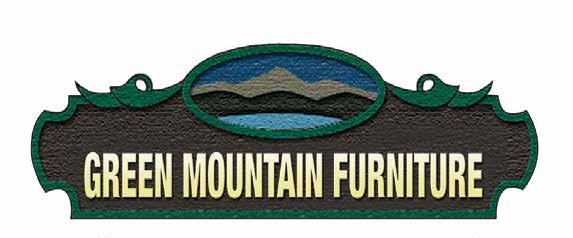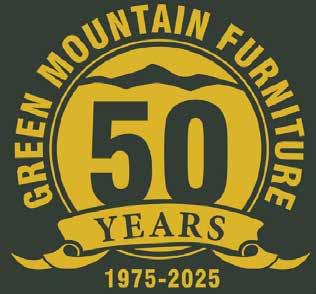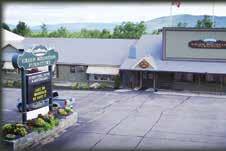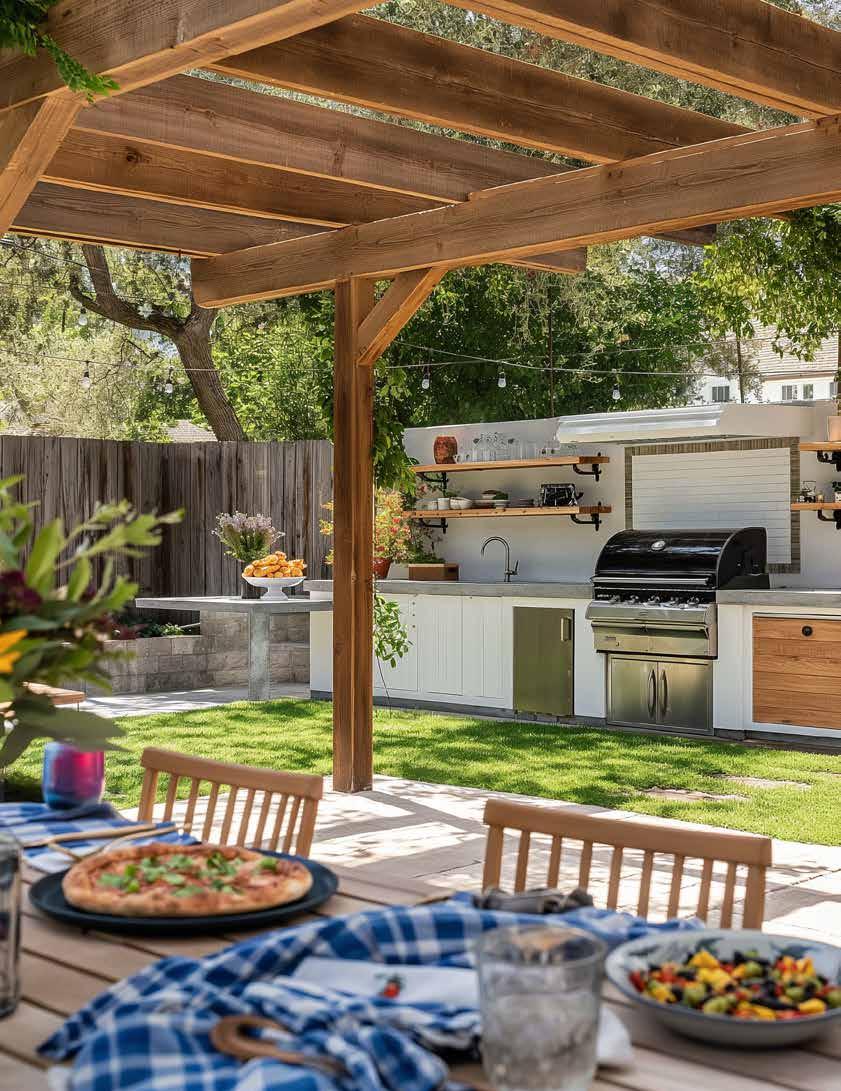
summer 2025 | complimentary









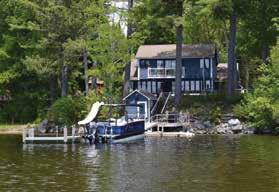
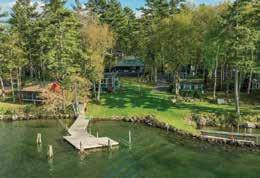






summer 2025 | complimentary
















By Thomas P. Caldwell
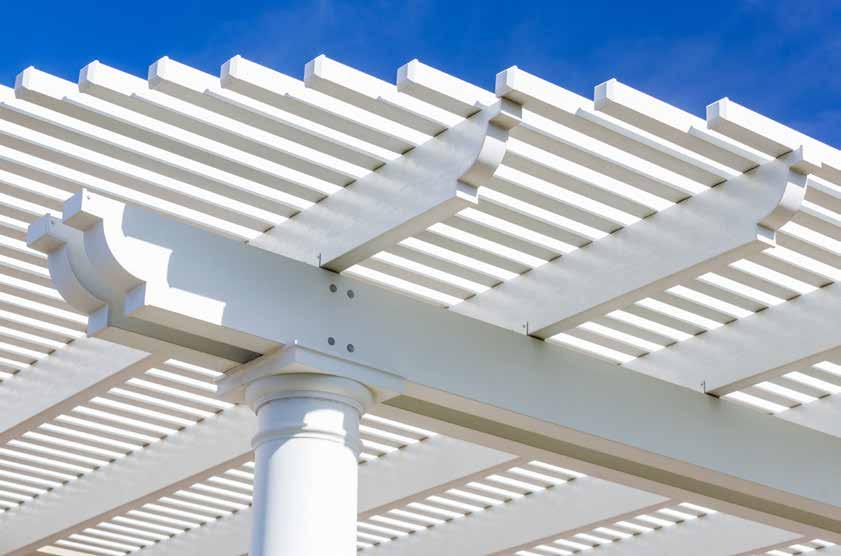







Summer days certainly are made for excitement, but also for relaxing — lying in the sun, perhaps enjoying a cool drink. The benefits of exposure to the sun include providing the Vitamin D our bodies need, along with calcium, used in building strong, healthy bones, as well as supporting a healthy immune system. Too much unrelenting sun, though, can cause dehydration, heat exhaustion, sunburn, skin damage, and increased risk of skin cancer. That is why it is important to make sure your home and yard have plenty of shade to cool you down and protect against ultraviolet light.
Outdoors, that can take the form of deck um-



brellas, shade canopies, screen tents, and awnings, while maintaining a cool indoor space can be enhanced through the use of bamboo blinds, drapes, blackout curtains, or cellular shades.
Best are the natural solutions that involve the planting of shade trees and shrubs. They not only add beauty to any property and help keep sunlight out of the home, but also help to shade the exteriors, keeping the home much cooler than it otherwise would have been. The US Department of Agriculture did a study that found the cooling effect of one young healthy tree can provide the cooling power of 10 room-size air conditioners running for 20 hours a day.
Planting trees requires determining which type is most suitable for your yard. It will depend upon available space, soil types, and location on the property. Deciduous trees provide shade during the summer but allow sunlight to reach through in the winter. There are many gardening centers and nurseries that can help you make the right choice for you.
Shrubs and vines can be planted around windows, offering an additional way to shade a house and keep it cool from the sweltering summer heat.
Obviously, trees take some time to grow and fill out, but there are more immediate ways to cool your property.
Awnings on the side of the house or overlooking decks, patios, and porches serve to cool large areas outside while also providing a cooling effect on inside spaces. One can choose between rigid wood, metal, or synthetic awnings, or vinyl or canvas retractable options. Some retractable awnings even come with the dual option of a motor for convenience and a manual crank for use if the power goes out.
Shade canopies, tarps, or sails are less expensive and can be attached to trees or other structures, making it easy to move
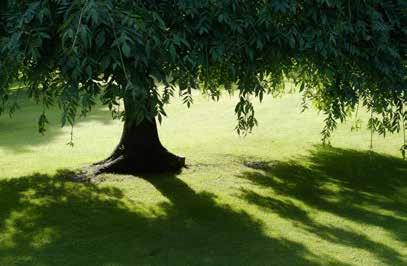
The least-expensive option is a simple deck umbrella; possibly one that slips through the center of an outdoor table, providing shade for snacks or meals.
To keep the house cool inside, there are window coverings that block out the heat and bright sunshine, ranging from drapes to cellular shades. Drapes provide more complete window coverage and are available in many colors, patterns, and fabrics, so they can match any decor. An option is to add a thermal lining to the back of the drapes to provide extra energy savings. Closing drapes during the hottest part of the day makes it easier for air conditioners and fans to keep the house cool, and light-colored drapes reflect the most sunlight to achieve the greatest cooling effect.
Cellular shades are even more energy-efficient because they use a series of honeycomb-like cell pockets to trap air and moderate its temperature before it radiates to the interior of

the home, which is useful in winter as well as summer. By choosing various pleat sizes and layers, it is possible to find the right amount of insulation for your purposes.
Another option for shielding the house from sunlight is to use reflective window films or blackout curtains. Reflective window films can block 78 percent of solar heat and most harmful UV rays.
Turning to the backyard, if looking to cover a large area, shade sails are a good option. They can be mounted on poles or brackets and stretched across a wide area. If mounting them on poles, the poles should be set in concrete to secure them against the forces of wind and rain.

ary, generally built of four pillars holding up a slatted or latticed roof. People have gotten quite creative with pergolas, mounting fabrics or hanging wind chimes and plants to give them a unique personality.
Finally, there are patio umbrellas, which have the advantage of not requiring any installation. They come in a variety of styles, from a cantilever umbrella, designed to be positioned alongside a patio table, to an umbrella with a central pole positioned through the center of a table.
Both shade sails and awnings can reduce heat gain up to 77% when installed around the west-facing windows.
If choosing awnings, getting retractable ones allows you to extend them for summer shade and retract them in winter. Because awnings are not easy to install, you may want a professional to do the job.
Out in the yard, you may want to install a canopy or screen house. They will need to be well-anchored against the wind, but they can provide hours of relief from both sun and foul weather.
Pergolas are another option, providing an open-air sanctu-



Whatever type of shade provider you choose, you will find that having the means to get outside without being harmed by the sun or having a cooler house that is less reliant on air conditioning makes for a more pleasant summer day.
A final option for cooler indoor temperatures is to choose plants with high transpiration rates. They not only cool the room, but they also enhance indoor air quality, which is important if attempting to seal the house against the hot temperatures outside.





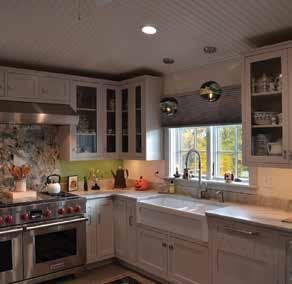


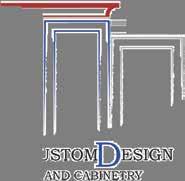

Buying a home is the most expensive purchase many people make in their lifetime. Some people do it only once, while others are in the market with greater frequency. In any instance when the home buying process involves securing a mortgage, buyers can benefit from knowing a thing or two about mortgage interest rates.
A mortgage interest rate can help buyers determine if a given home is affordable or beyond their budget. Rocket Mortgage says mortgage interest rates can have a major impact on long-term costs, so it is imperative to seek the lowest rates possible. However, an assortment of economic variables affect mortgage interest rates, and conditions unique to each buyer also can affect the rate they’re eligible to obtain. Understanding home loan rates can help potential buyers better navigate the complex process of buying a home.
What is mortgage interest?

derived from a combination of factors that include the Federal Reserve’s monetary policy, economic conditions, and a borrower’s personal financial situation. The Federal Reserve (in the United States) influences the overall rates by adjusting the federal funds rate, or the rate at which banks lend to each other overnight. This not only impacts mortgage rates, but also additional interest rates, according to Fannie Mae. Lenders will ultimately decide on the specific rates to offer borrowers.
How does a borrower’s financial situation affect mortgage rates?
When a person buys a home with a mortgage, he or she doesn’t just pay back the amount borrowed, which is called the principal. The loan also requires paying interest, which is essentially the cost of borrowing money. Mortgage interest is calculated as a percentage of the remaining principal, says Investopedia.
How are mortgage rates set?
Mortgage rates are not determined by a single variable. They are

Lenders will conduct a thorough assessment of a potential borrower’s creditworthiness. They will look at, among other things, a borrower’s credit score and debt-to-income ratio. A higher credit score typically results in a lower interest rate. A lower DTI indicates a lower risk to the lender, also potentially resulting in a lower interest rate. Squaring away finances well in advance of applying for a mortgage can help home buyers secure lower interest rates that could save them considerable sums of money over the life of their mortgages.
How do loan types affect mortgage interest?
A home buyer will pay interest no matter the mortgage type, but there are options to select a fixed or adjustable interest rate, or even interest-only mortgages.
According to Bankrate, with a fixed-rate mortgage, the interest rate remains the same throughout the life of the loan, meaning the payment for principal and interest will remain consistent. Additional charges that are wrapped into mortgage payments could change, however. Property taxes and homeowners’ insurance charges could increase, for example. Fixed rates tend to be lower when the term of the mortgage is shorter. So borrowers can opt for a 20-year mortgage over a 30-year to save some money on interest.
An adjustable-rate mortgage (ARM) will see the interest rate change during the repayment period. It may start with a low introductory rate for the first several years of the loan, but then it can go up or down depending on market indexes and benchmarks. Many lenders put a cap on how high the interest rate can go, however.
Various factors determine mortgage interest rates for home buyers, including market conditions, credit standing, federal rates, the type of loan, and term length. ~Metro


















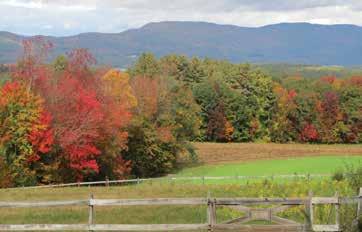


Roofing Services
Comprehensive roofing solutions, including ashphalt shingles, corrugated metal and standing seam roofing

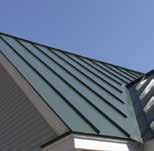
Installation, repair, and replacement of vinyl, composite, wood, fiber cement, and more
Chimney Services
Chimney Inspections and Liner Installations to keep your family safe and protected.
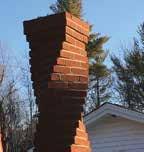

By Kathi Caldwell-Hopper
Imagine living in a castle, the estate high atop a mountain. Your home would be in a magical place with views of the scenery far below. The furnishings would be beautiful and created with only the finest material and your walls adorned with carefully chosen artwork.
As we all know, an art collection is up to the taste of the person who gathers pieces for display in their home. It might be oil paintings of landscapes or portraits, pottery, watercolors, sculpture, or other items that appeal to a particular taste.
At Castle in the Clouds in Moultonborough, art abounds. For those unfamiliar with the story of Thomas and Olive Plant, the wealthy couple constructed and lived at their estate in the Ossipee Mountains. The home was called Lucknow, and it was a place of glittering wealth and society for many years. The Plants may have enjoyed socializing, but they also loved the seclusion and outdoor beauty of their property, where they spent a lot of time horseback riding, golfing, and simply being on their land.
Like many cultured people, the Plants had a lot of artwork and displayed it throughout their castle home. While in residence at what is today called Castle in the Clouds, they amassed many pieces of art, including fine sculptures and paintings. This was the age (early 1900s) when mansions were heavy with sculptures of angels, gods, and goddesses, but the Plants eschewed such pieces in place of dimensional works taken from nature.
Castle in the Clouds curator Robin Sherman has studied the Plants’ lifestyle and furnishing and says, “Our work is part of an ongoing effort to restore Lucknow Mansion to its original appearance and recreate the interiors as they were in the early years of Tom and Olive Plants’ residency, circa 1914 to 1924.”
She continues, “I’ve had good luck identifying sculptures seen in photos of Lucknow taken between the late 1910s and early 1920s. For instance, the Marley horses displayed on the mantel in the Main Hall are after a much larger work by Guillaume Coustou the Elder. After identifying the piece from the photos, I tracked down a pair authentic to the period on eBay and purchased them to display. A few other pieces I’ve identified include Delabrierre’s Chien Braque et Epagneul sur Faisan, Victor Peter’s Deux Oursons Jouant (Two Cubs Playing), and Paul Philippe’s Radha. Unfortunately, we do not have examples of these pieces to display just yet. We’re still looking!”
When the artwork is displayed, it will give the public ideas on showcasing their own collection. “This is how the Plants did it,” you might tell yourself. This might help you realize you can give your cherished artwork a chance to shine by placing pictures in groupings or alone for display in your house.
When asked what today’s homeowners can learn from the display of art the Plants had in their home, Sherman says, “I think the biggest takeaway from the Plants’ art collection is that there’s no right or wrong way to do it. I think the Plants collected art that they enjoyed. It’s a diverse assortment of media, period, and subject matter. You wouldn’t expect to see Art Deco statues below a print of a Japanese temple, but it works. So, I’ve learned that if I like a piece, it’s worth displaying in my home.”
When Tom and Olive Plant lived at the Castle, their collection included crafts, such as pottery and stained glass, as well as fine art. (Perhaps they had seen and appreciated the work of the skilled masons who helped construct the Castle by chiseling and fitting native stone into 3-, 4-, 5- and 6 sided pieces?)
Says Sherman, “Over the years, many visitors have been interested in the art we have on display – asking whether pieces were owned by the Plants or about the artists. My goal at the Castle is to share as much information about Lucknow with the broadest audience possible. If people are asking particular questions, I want to be able to give them answers.”
Tom and Olive Plant were both interested in art and enjoyed visiting museums, according to Sherman. Gathered from family stories, it is known that the Plants purchased art while traveling abroad. Much of it was the art that was used to decorate Lucknow. “Tom Plant also seems to have been a fan of artist Thomas Moran. He purchased three original oil paintings from the artist in the early 1910s, which hung here at Lucknow,” Sherman adds.

"Sunshine" by Alexander Pope, Jr. - digital reproduction of the original oil painting, commissioned by Tom Plant (depicts his favorite horse, Sunshine). (Courtesy Castle in the Clouds)


Like many collectors, the Plants owned an eclectic mix of art. They had Art Deco pieces, Asian-inspired works, a 19th-century Belgian tapestry, Neapolitan School gouache paintings, numerous prints of Napoleonic battles, and three original Thomas Moran oil paintings.
Given their property’s scope and natural beauty, one might assume the Plants would adorn their lawns and pathways with sculptures. However, Sherman says that was not the case. “The Plants didn’t have outdoor sculptures at Lucknow, but they did have plenty of fine wooden furniture in their home. Lucknow is furnished with pieces by Tobey Handmade Furniture, Irving & Casson, and Paine Furniture. A lot of the furniture at Lucknow can be categorized as Arts & Crafts, a key tenet of which is that a piece should be beautiful and functional.”
For a look at some of the art collected and enjoyed by Thomas and Olive Plant, a trip to the Castle will prove interesting. Sherman speaks of what visitors will see, explaining, “The artwork we know was owned by Tom and Olive Plant is displayed in the mansion’s library. There are several prints depicting Napoleonic battles, several bronzes, a few vases, and a marble statue of a flutist by Paul Philippe, which is, unfortunately, missing its flute. We’ve also worked diligently to collect period-authentic replacements for pieces that we know the Plants owned but were no longer here at the Castle.”
Any piece of art owned by the Plants that is still in the collection at the Castle is on display for visitors to enjoy. While it is likely not the Plants’ entire collection, each piece offers a glimpse into what appealed to the once-wealthy couple. (Sherman emphasizes that all Plant-owned artwork is displayed throughout the season.)
For second-home owners who have paintings and other art at their Lakes Region home, once the season ends and their place is unoccupied during the winter, lessons can be learned from how Sherman and staff keep the Plant’s art from being damaged. Caring for art and sculptures is essential, and Sherman explains, “When we close in October, all the art is covered with acid-free tissue and stored away from sunlight. (Our storm windows have UV filters to help protect against sun exposure, but in the summertime, the Lakes Region humidity can be a challenge.)
When visiting the Castle this season, make sure to see the art the Plants cherished and ask whatever questions you have about their entire collection. While the Castle does not offer a guided tour specifically about Lucknow’s art, there are informational gallery guides to borrow and explore the artwork at leisure.
For information, hours of operation, and a list of events, visit www. castleintheclouds.org or call 603-476-5900.
Invisible Fence® has been keeping pets happy, healthy and safe at home for more than 50 years. Give your pet the freedom to run and play the way nature intended, and give yourself the freedom to drop the leash!
Logovariationstobeusedonwhiteorlight backgroundcolors.LogowithoutDogHeadtobeused indigital/webapplications.

and
People considering buying or selling a home are facing a unique market. The real estate market has been in flux for several years, and high interest rates have made it more expensive to borrow.
The Mortgage Bankers Association is projecting that 30-year mortgage rates will level out to 6.5 percent for the foreseeable future. That means that people who have been waiting for changes in the real estate market could be disappointed, and hesitant buyers may finally just bite the bullet and buy, even if mortgage rates are not where they hoped they’d be in 2025. Homeowners with properties they are considering listing for sale would be wise to make certain changes that will help garner the best prices from buyers.

Make kitchen and bath improvements: The kitchen is the heart of many homes. Real estate agents may recommend that homeowners make minor to moderate kitchen upgrades like resurfacing cabinets, upgrading countertops, and changing fixtures or hardware to give the room an overhaul.
Homeowners also should look to bathroom updates as smart investments that can improve home value. Katie Severance, author of The Brilliant Home Buyer, characterizes kitchens and baths as “money rooms” that add the most value to a home.
Declutter the home: Homeowners should clean out items they no
longer need. Decluttering can make a space feel bigger, which is beneficial in a market where open concept floor plans remain popular among home buyers.
When buyers walk through a prospective home, they want to envision themselves living there, something that is more easily done if the home isn’t overrun with the current homeowner’s belongings.
Get to painting: Painting a home is a cost-effective renovation with a lot of oomph. Freshly painted rooms appear clean and updated, says HGTV, and that can appeal to buyers. Homeowners should choose neutral colors to accommodate the widest array of potential buyers.
Improve the landscaping: The exterior of a home is the first thing potential buyers will see as they roll up to view a property or look at a listing online. Homeowners should start by evaluating and enhancing the landscaping. Ensure the lawn is well-maintained and add plants that provide color without a lot of maintenance.
Expand usable space: Homeowners can think about adding to the usable space in a home. This translates into finishing basements or attics, or even converting garages to rooms. Or it may involve adding a three-season room.
Homeowners can consider a number of improvements to increase the resale value of their properties. ~Metro

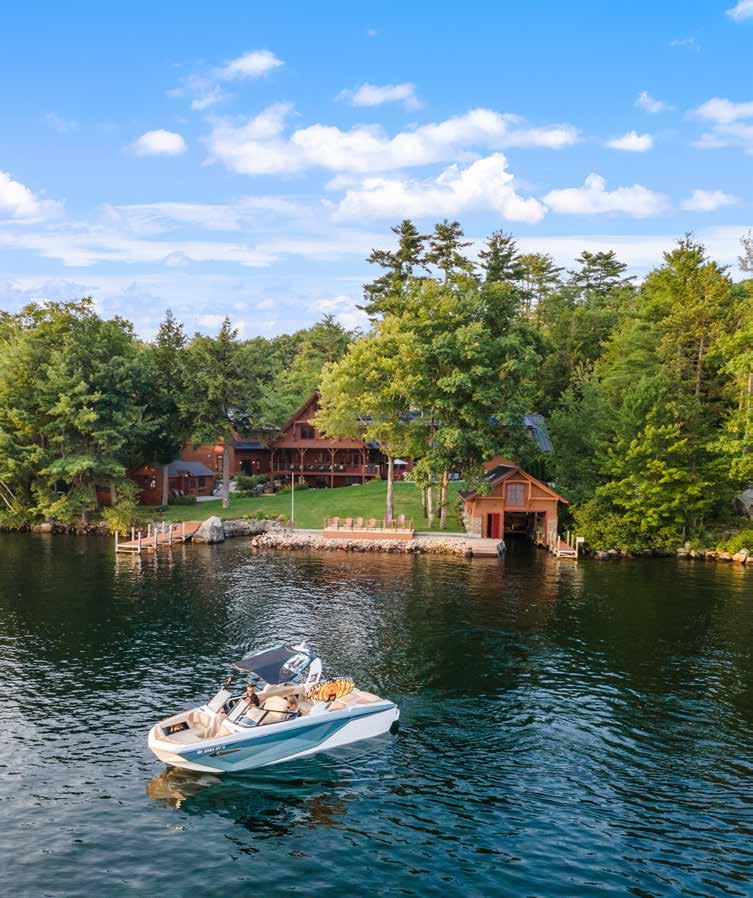

By Chef Kelly Ross

Hello Lakes Region. I trust this finds all of you are completely psyched about the summer season and all that comes with it. Seriously, what’s not to like? Attitude has so much to do with all our lives, and nice weather does wonders for everyone’s attitude. Summer makes everything better, the longer days and warm weather are always a reason to smile. Another reason to smile during summer: grilling, which in my book translates to much more flexibility in what we can eat this time of year, and better-tasting food. I’ve never met a meal off the grill that I disliked, and more times than not, I’m in a food Xanadu. The list of incredible food ideas off the grill is almost limitless, with the countless amounts of marinades and sauces. Another great part of summer is entertaining friends and families with house-party BBQs, easily among my favorite aspects of the season. It’s a beautiful thing when your backyard is full of your favorite people enjoying good food, drinks, and good company. Yes, that’s my theme for the day: spectacular ideas when summer grilling, whether for your family or for a crowd. I have an amazing summer dessert and five ideas off the grill, but first, I want to share a few awesome salads to serve as side dishes with all the goodies coming off the barbie. Let’s do this, shall we?
So many backyard BBQs, picnics, and potluck get-togethers have a pasta salad in the mix. I’m not a huge fan of some, especially from the category of “same ‘ole, same ‘ole,” and I’ll just take a small spoonful to pop onto my plate to test drive it. Maybe this is because I’m a chef, but I love recipes that move away from the norm and into a little imagination. Well, this pasta salad most definitely has its own personality, and it’s a personality I’m a big fan of. If you’re like me and are always looking for new ideas for pasta salads, this will be a new winner for you. It has a Texas influence with a little Tex-Mex flair and a great smoky flavor. Besides the pasta, this has corn, black beans, cheddar cheese, bacon, tomatoes, and a tangy, zesty sauce to coat it all. This will feed 8 as a side dish. As for the dressing, I al-


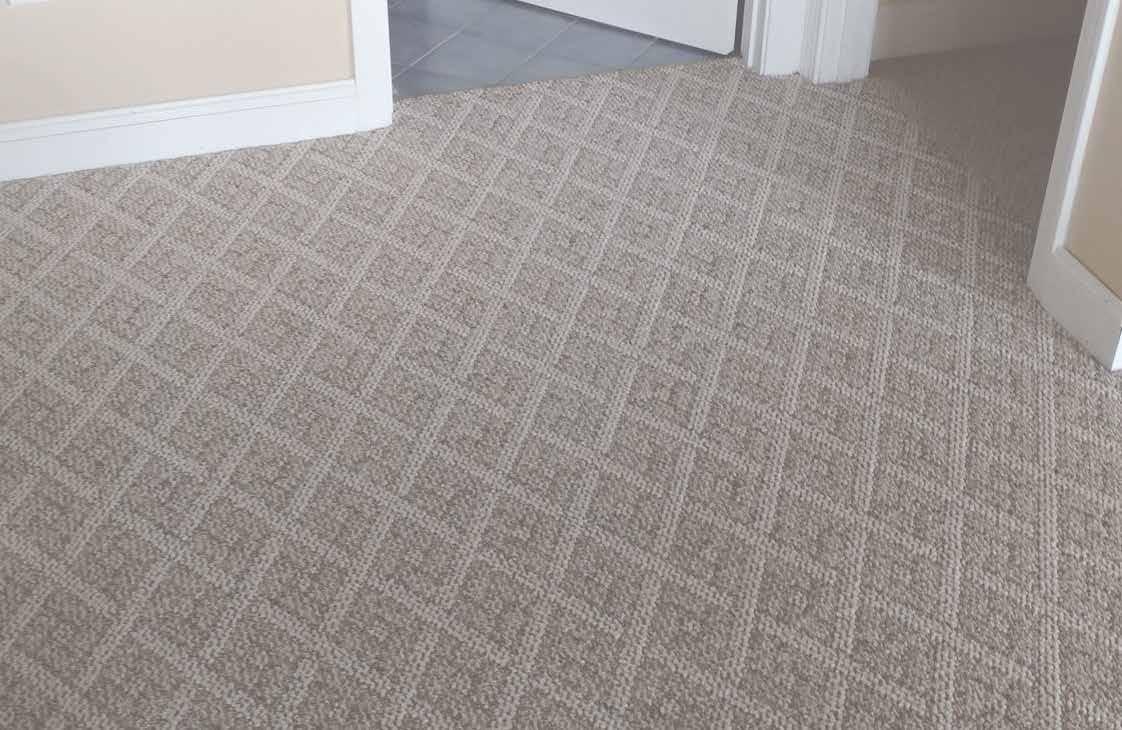

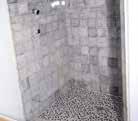

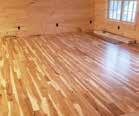

ways make extra as it works well on almost any protein as a sauce (I use it on burgers, steak, pork, and chicken.) The total time to make this is maybe 45 minutes. If you want to make it in advance for the next day, I suggest prepping/storing everything separately and mixing just before service, adding the chopped bacon last, as we all know bacon is best when at room temp or warm.
6-8 slices bacon
12 oz bowtie pasta
1 cup mayonnaise
2 tbsp barbecue sauce
Texas Pasta Salad
2 tbsp spicy brown mustard
2 tbsp taco seasoning
1 tbsp hot sauce
1 pint cherry tomatoes, halved, about 2 cups
1 large bunch scallions, thinly sliced, plus more for garnish
1 can black beans, 15 oz, drained and rinsed
1 can corn kernels, 15 oz, drained
8 oz smoked or sharp Cheddar cheese, cut into small cubes, about 1 ½ cups
Cook the bacon until crisp, then drain on paper towels and cool, then crumble or chop into small pieces. Set aside. Cook the pasta until al dente according to the package directions in a large pot of salted boiling water. Drain the pasta and rinse very well with cold water to stop the cooking process. While the pasta cooks, in a large bowl, whisk the mayonnaise, barbecue sauce, mustard, taco seasoning, and hot sauce until smooth. Add the cooked pasta, tomatoes, scallions, beans, corn, cheddar, and bacon to the bowl with the sauce. Toss until the pasta and vegetables are evenly coated in the dressing. Serve immediately or cover and chill in the refrigerator for up to 4 hours. Garnish with additional scallions just before serving. Store leftovers in an airtight container for up to 3 days in the refrigerator. Loosen with a splash of water if needed before serving.
Here is another great, unique summer salad that also makes a great side dish, although it works as a light lunch as well. Tomatoes, cucumbers, onions, and feta cheese take center stage, as well as the delicious homemade lemon dill dressing. I’ve met and enjoyed many tomato/cucumber salads, but I think this one is my favorite. It is best served right after mixing. I suggest making the dressing in advance so it is cold when I mix it with the veggies and cheese. Like the last recipe, this will feed 8 as a side dish, and you can have this made in only 15 minutes. That’s always a great selling point.
Tomato Cucumber
Feta Salad
For The Salad
2 cups diced English cucumber
2 cups diced grape tomatoes
1 cup diced red onion
6 oz crumbled feta cheese
For The Dressing
2 tbsp freshly squeezed lemon juice
2 tbsp olive oil
2 garlic cloves, minced
¼ tsp black pepper
¼ tsp salt
2 tbsp fresh chopped dill
Place all the salad ingredients in a large bowl. In a separate bowl, whisk together the dressing ingredients. Pour the dressing over the salad and toss gently to combine. Serve immediately. If there are any leftovers, I suggest eating it within 24 hours.
I do have one more side dish or

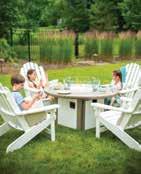




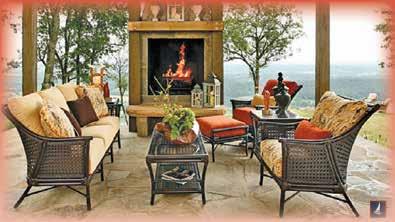

main course for your vegetarian friends and family, as now we are officially grilling! Although I am the farthest thing from a vegetarian as anyone you’ll find, I do still love my veggies, especially when off the grill. The greatest marinades that bring your protein recipes over the top will do the same for your grilled veggies. This batch of grilled balsamic vegetables is a tasty side dish, easy to make, and great on the grill or indoors using a grill pan on a rainy day. Like most of my recipes, feel free to tweak the ingredients, as there is no reason why you can’t substitute your preferred veggies for the ones I have listed. If using as a side dish, plan on this feeding 4-6, but if as an entrée, plan on more like 2-4. Prep time is 10 minutes, as is grill time, although I suggest 30-60 minutes of marinating before grilling.
For The Marinade
3/8 cup balsamic vinegar
3 tbsp olive oil, plus more for brushing if needed
2 garlic cloves, minced
1 ½ tsp Italian seasoning
½ tsp salt
¼ tsp black pepper
¼ tsp crushed red pepper
The Veggies
2 medium zucchinis, sliced lengthwise
2 medium summer squash, sliced lengthwise
1 red bell pepper, sliced
1 yellow bell pepper, sliced
1 orange bell pepper, sliced
1 large red onion, sliced into rounds
8 oz fresh white mushrooms, halved
Fresh herbs for garnish, optional
In a small bowl, whisk together the balsamic vinegar, olive oil, garlic, Italian seasoning, salt, black pepper, and crushed red pep-


per. In a large bowl, add the zucchini, bell pepper, onion, and mushrooms. Pour the marinade mixture over the vegetables, tossing well to ensure they are evenly coated. Let marinate for 30-60 minutes. Heat a grill over medium-high heat. Once heated, place the vegetables in a single layer on the grill and cook the vegetables for 3-4 minutes on each side, or until tender. Repeat if you need to do multiple batches. Serve garnished with chopped fresh herbs if desired.

Let’s get down and dirty with a favorite of mine from the ocean. In one of the all-time classic foods that falls into the “love ‘em or hate ‘em” category, let’s talk grilled oysters! This recipe is far from the norm, and even better, the oysters don’t need to be shucked. If you’ve shucked oysters before, you will love the idea of not having to pry these buggers open. The concept here is to put the whole oysters on the grill until they start to open, then they pry open very easily. The kicker is that the oyster is then topped with a scrumptious chorizo butter sauce before you slop them down -- yup, different than the norm. As much as I love the norm, I love the flavor and presentation of these much more. If you like a little bite to your oysters, as most do, chorizo will give you that plus more. The grilling doesn’t cook the oysters unless that is what you want, but they can
Check Out Our New Kitchen & Bath Showroom from concept to completion

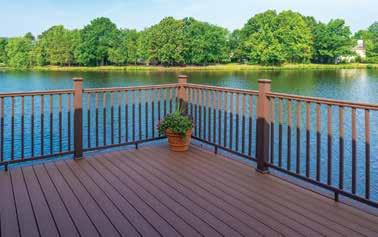




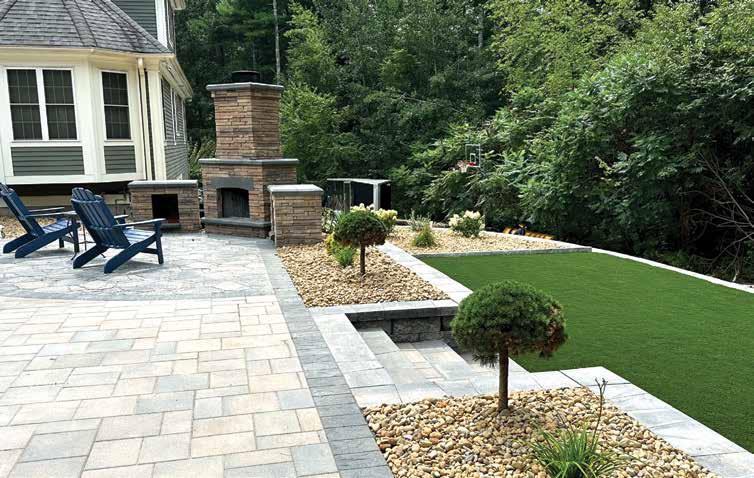


easily still be much closer to raw than cooked if preferred. Once the shells are separated and the chorizo butter is added, you’ve got a winner. This recipe is for 18 medium-large oysters. I know many where this recipe would be fine for 2 of you, but more often, 3-4 is the norm. You will know how many you need if you need to double the recipe. Plan for 45 minutes, and most of that is making the butter.
4 oz fresh Mexican chorizo, casings removed
1 ½ sticks unsalted butter, cut into ½ inch cubes
2 tbsp fresh lime juice
Salt
18 medium-large oysters, scrubbed
Cilantro leaves and finely grated lime zest, for garnish

In a skillet, cook the chorizo over moderate heat, breaking it up with a spoon, until lightly browned, 8 minutes. Scrape into a bowl and let cool, then break into small clumps. Add 1 tbsp of water to the skillet and simmer over low heat. Add the butter to the skillet a few cubes at a time, whisking constantly until it’s melted before adding more. Stir in the chorizo and lime juice and season with salt. Keep warm over very low heat. Light a grill. Place the oysters on the grill, flat side up. Grill over high heat until the shells open slightly.
Carefully transfer to a platter and, using kitchen gloves or a mitt, remove the top shell. Spoon the chorizo butter onto the oysters and garnish with a cilantro leaf and lime zest. Serve right away. Next, it’s all about a grilled pizza using store-bought naan or flatbread. Grilled pizzas are so easy, especially when using either bread option as opposed to pizza dough, and although this recipe is more on the “hoity toity” side of things, there is no reason you can’t use any toppings of choice. For this one, we bust out prosciutto, grape tomatoes, arugula, mozzarella, and shaved parmesan, topped with a combo of lemon juice and olive oil. Sounds pretty cool, huh? This recipe is built for 4, so plan accordingly. You can have these made in 10-15 minutes, another huge win in my book.
Flatbread Pizza with Prosciutto, Arugula, and Mozzarella
4 flatbread or naan pita rounds, any flavor, but I suggest garlic
2 cups grated mozzarella
2 cups arugula
2 tbsp extra-virgin olive oil
2 tbsp fresh juice from 1 lemon
Kosher salt and freshly ground black pepper
1 cup halved grape tomatoes






6 oz prosciutto
Shaved parmesan, to taste
Heat your clean and oiled grill to medium-high heat until hot. Add the flatbread and cook until browned, for about 1 minute. Pull off the grill and flip upside down and then immediately top each evenly with the mozzarella, tomatoes, 3-4 pieces of prosciutto and put back on the grill and cover and cook until the cheese melts, about another minute or 2. In a small mixing bowl, dress the arugula with the olive oil, lemon juice, salt and pepper and set aside. Pull off the grill, place on a serving plate and top pizzas with the dressed arugula, parmesan, and a hit of pepper. Elegant perfection in a pizza.
Being the sandwich connoisseur that I am, I offer you an outstanding steak sandwich. The cut of meat that I recommend is either a flank, flap, hanger, or London broil. They are all cuts that you grill whole to rare-medium rare, let them sit for a bit, then cut into strips on the diagonal and put onto or into a quality hunk of bread with a few additional goodies. The additional goodies I speak of are grilled onions with a perfect cotija mayo to accompany them, but what might be the star of this recipe is the jalapeño marinade for the beef before it is grilled; it’s amazing. I do have a major weakness for any recipe influenced by the south of the border. This one also has garlic, lime juice, and olive oil as well as some sweetness and tang. Although many BBQs are all about a steak dinner, sometimes, more casual with a crazy good sandwich just makes more sense. No doubt, if some of your crowd are watching their carb intake, they can easily skip the bread, but I love the marriage of all ingredients in this one. My grill sees a ton of action year-round and one of my favorite nicknames for it is my “ultimate sandwich machine”. Prep time for this is 15 minutes, the grilling/post-grilling time is 25-30 minutes, and the marinating time is 30-60 minutes. To get the ultimate sandwich, please follow the cutting directions process of the cooked beef, as the final step of cutting it against the grain is a
huge part of making this a “melt in your mouth” sandwich.
Grilled Jalapeño Marinated Steak Sandwiches with Charred Onions and Cotija Mayo
For the Cotija Mayo
¼ cup mayonnaise
1/3 cup finely grated cotija cheese
2 tbsp sour cream
1 tbsp lime juice
1 tsp chili powder
½ tsp cayenne pepper
For the Marinade
1/3 cup juice from about 4 limes
3 tbsp olive oil
2 medium jalapeños, stemmed and roughly chopped
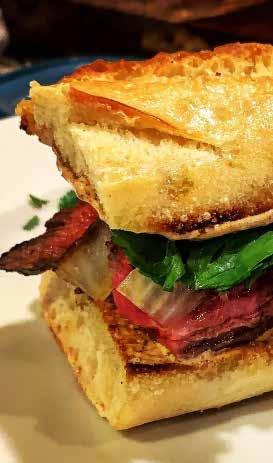
2 tsp freshly minced garlic, about 2 medium cloves
1 tbsp dark brown sugar
1 tbsp soy sauce
1 tbsp apple cider vinegar
1 tsp kosher salt
1 tsp freshly ground black pepper
For Grilling 1-1 ¼ lbs hanger, flap, flank, or London broil steak, trimmed of any hard fat and butterflied if thick
1 medium-large onion, cut into ½ inch slices and skewered horizontally
1 handful fresh cilantro leaves
1 baguette, 2 feet long, or 2 at 1 foot
Extra-virgin olive oil, for brushing



For the cotija mayo, whisk together all the ingredients in a small bowl. Set aside. For the marinade, place all the ingredients in the jar of a blender. Blend until smooth. If you own a tenderizer needle, which I strongly suggest buying if you do a lot of grilling, stab the beef repeatedly on both sides, place it in a large resealable plastic bag, and pour in the marinade and seal, removing as much air as possible. If you don’t own a tenderizer needle, try using a fork, although it doesn’t work as well. Let it marinate for 30-60 minutes. Set clean, oiled cooking grates in place, cover the grill, and allow to preheat for 5-10 minutes on medium-high heat. Once to heat, turn off one side of the grill. Remove steak from marinade, place on hot side of grill, and cook until deeply browned on both sides and an instant-read thermometer registers 125 degrees when inserted into center of meat. Remove from the grill and let it rest for 10-15 minutes. While steaks rest, brush onions with oil and place on hot side of grill. Cook until charred on both sides and slightly softened, 4-5 minutes per side. Transfer to cutting board, remove skewer, and roughly chop. Slice the beef into 2-inch portions with the grain, then slice against the grain into ¼ - ½ inch strips. Slice the baguette into four 6-inch portions and halve each portion lengthwise. Brush cut sides of each baguette with oil. Grill baguettes over the hot side of grill, cut side down, until lightly browned, about 1 minute. Remove to plate. Spread cotija mayo on top and bottom halves of the bread. Top the bottoms of bread with steak, onions, and cilantro. Place sandwiches on cool side of grill, cover, and cook until warmed
through, 3-5 minutes. Transfer to a plate or tray and serve immediately and listen to all the moans and groans from the crew.
Before we end the day with the ultimate hot summer day dessert, I want to share a simple salmon dish accompanied by a lemon salsa/ relish that is awesome as well as versatile; I often use it with grilled chicken, pork, and lamb. The salmon is simply cooked with a great combo of seasonings and flavor, no marinade, and once finished, it’s served with the sidecar of lemon relish goodness. Between the chopped lemon, the salsa includes shallots, capers, Castelvetrano olives, as well as a little sweetness and spice. When buying the salmon, look for skin-on center cuts as opposed to the thin ends of the salmon fillet. The plumper, the better when grilling salmon, especially for those who prefer their salmon on the medium rare-medium side of things. This recipe is for 6 portions, and you can have this prepped and cooked in less than half an hour. So Good!
Grilled Center-Cut Salmon with Lemon Relish
1 tsp lemon zest plus ½ cup finely chopped lemon segments, divided
¼ cup finely chopped shallot
2 ½ tsp kosher salt, divided ½ tsp granulated sugar
1/3 cup plus 2 tbsp extra-virgin olive oil, divided
¼ cup drained capers, roughly chopped
¼ cup pitted Castelvetrano olives, chopped
3 tbsp chopped fresh flat-leaf parsley, divided ½ tsp Aleppo pepper or ¼ tsp crushed red pepper
1 pinch of cayenne pepper
6 skin-on center-cut salmon fillets, 6 oz each
2 tsp fresh thyme leaves
¼ tsp black pepper
Combine lemon segments, shallot, 1 tsp salt, and sugar in a medium bowl. Gently whisk in 1/3 cup olive oil and stir in capers, olives, 2 tbsp parsley, Aleppo, and cayenne. Set aside. Preheat grill to very
We can no longer take the safety of our water for granted. When you turn on your faucet, bathe your child, water your lawn, or flush your toilet, you want to know that your water is safe and clean. We will test and explain your water chemistry in a way that is easy to understand and then recommend the most efficient, effective and economical water treatment solution, custom fit to your needs.


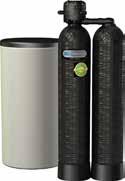




high and brush salmon with remaining 2 tbsp olive oil and season with thyme, pepper, lemon zest, remaining 1 tbsp parsley, and remaining 1 ½ tsp salt. Grill salmon, skin sides down, covered, until skin is golden and crispy, about 3 minutes. Flip fish and grill, uncovered, to desired degree of doneness, 2-3 minutes for medium-rare. Transfer fillets to dinner plates, and top evenly with the relish. For the salmon lover, this will become a frequent flyer in your grilling repertoire.
For today’s final recipe, our dessert du jour, I was contemplating a few ideas. I was originally thinking of something using fresh berries, which has always been a favorite of mine, but an ice cream pie won out in the end, and I can’t imagine anyone not falling in love with this on a hot summer day. If you’ve never made an ice cream pie, it’s as easy as pie, and will win you the envy of your eating crowd. I know that I say this a lot, but you can substitute so many flavors for the ones I have listed, as well as endless options for the extra goodies tossed in. Once I share the recipe, I’ll also share a couple of other great ideas for you to experiment with; I promise you they all scream summer fun, and although the adult crowd will love this, the kids will do cartwheels. This is perfect for any kid’s birthday party, and like almost any pie, it will get you 8 slices. If you have freezer space as I do, I will usually make 4 pies at a time, often all different kinds to bust out of the freezer on a whim for any occasion. This one has Oreo cookies and kibbles and bits of busted/crushed candy bars or pieces of actual candy. If you make a few of these to pull out on any given day, it will make you a hero. If all of this isn’t enough to sell you, it only takes 15-20 minutes to make, but it needs to be frozen for hours, as you well know.





Oreo Ice Cream Pie
½ gallon ice cream, combo of vanilla and chocolate, or maybe a chocolate swirl, slightly thawed
1 cup of hot fudge and/or caramel sauce
1 graham cracker crust or Oreo cookie crust, 9 inches
1 cup crushed Oreo cookies
¾ - 1 cup of crushed Heath bars, Snickers, Reese’s pieces, etc
Whipped cream for service time, optional
Additional crushed cookies/candy for topping, optional
Place a layer of ice cream in the crust. Drizzle with hot fudge or caramel sauce. Sprinkle with most of the crushed candy and some of the Oreos. Place another layer of ice cream in the crust, then repeat with sauce, and top with the rest of the candy and cookies and/ or candy. Return to freeze. When ready to eat, pull 5 -10 minutes before slicing and top with whipped cream and additional cookies or candy if preferred. Regardless, you will have yourself a winner for all involved. Here are a couple of my other favorites, but truly, you can easily come up with a plethora of options to accommodate your crowd’s favorite flavors.
Grasshopper Cookie Pie: Use a chocolate cookie crust with mint ice cream, hot fudge sauce, and crushed Andes Mint candy.
Chocolate Peanut Butter Pie: Peanut Butter ice cream in a chocolate cookie crust with hot fudge, crushed Snickers, and Reese’s pieces with crushed peanuts on top.
That’s all she wrote, boys and girls, so do what you can with some of these recipes to bring big smiles to your crowd as well as your taste buds. Have a great summer, my friends, and if any of you want to touch base with any questions or feedback, please reach out at fenwaysox10@gmail.com.












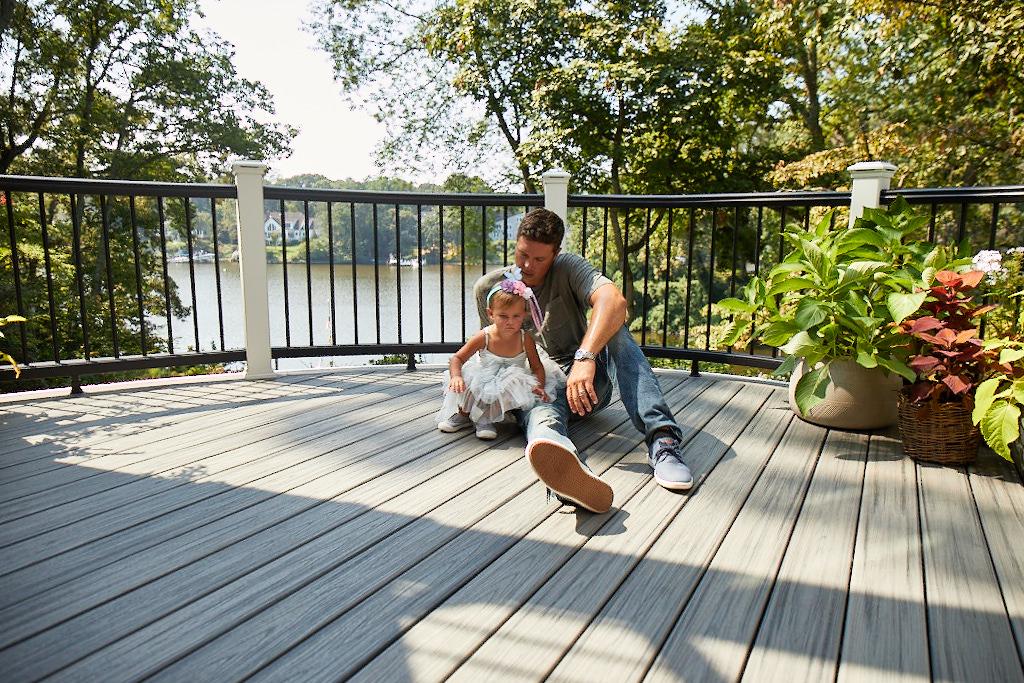
An outdoor space to share the things that matter most.
At Trex® the #1 brand in outdoor living, we believe that a deck is more than just a deck. It’s a place to be enjoyed with the people that matter most -- not sanded, stained and sealed. And you can feel good knowing that our high-performing, low-maintenance decking is made from 95% recycled and reclaimed content and comes backed by 25-, 35- and 50-year limited warranties. At Trex, we see it too. To learn more, contact belletetes.com or stop in at any of our locations.






Home renovations are significant undertakings. Though some projects require more sizable investments of time and money than others, all merit homeowners’ attention and inspire some excitement when pondering the finished product.
A finished product tends to offer more appeal when the project is overseen and undertaken by a professional contractor. Small projects may be in the wheelhouse of skilled do-it-yourselfers, but most homeowners are best served by leaving home renovations to the professionals. Finding the right contractor for a given job is of the utmost importance, and the following are some tips to help homeowners do just that.
• Seek word-of-mouth recommendations. Word-of-mouth advertising has long been recognized as an invaluable tool to attract customers, and for good reason. A 2025 report on the state of the roofing industry provided by Roofing Contractor, the official publication for the International Roofing Expo®, found that 79 percent of homeowners identify word-of-mouth as the top way to find a roofing professional. Word-of-mouth is so valued because homeowners can ask friends or neighbors about their experiences with a given professional in a pressure-free setting. Word-of-mouth also can help homeowners cut down on the pool of potential contractor candidates, which is no small benefit in markets flooded with renovation professionals.
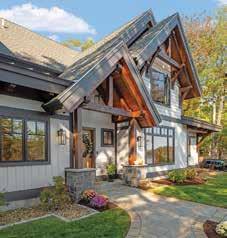
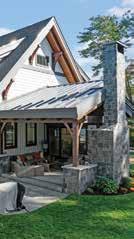
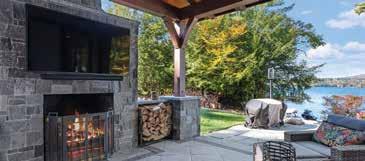
• Secure multiple written estimates. It can be time-consuming to speak to multiple contractors and secure written estimates from each one, but such legwork is well worth the effort if the result is finding the right contractor. Secure multiple estimates, even if the first one provided to you is below budget. Multiple estimates allow homeowners to compare what’s included and not included in each one. Some contractors offering low estimates may not include materials costs or additional factors that will increase the price. Others may seem more expensive initially, yet prove more affordable than competitors if their estimates include all of the costs associated with the project. Only a direct comparison of multiple estimates, which should include details specific to the project and an itemized list of what will be provided and performed by the contractor, can give homeowners an idea of what they’re paying for.
• Stay local when possible. Hiring local contractors is beneficial for a number of reasons. Hiring locals keeps money in the community and thus supports the local economy. And working with local contractors can make it easier for homeowners to keep lines of communication open. Many projects also require a little post-completion upkeep or even some tweaks, which is more easily accomplished when working with contractors based nearby. And finally, local contractors will be familiar with building codes and other details specific to a given town. That familiarity can ensure a project is done in adherence to codes and not stalled by permit- or inspection-related delays.
• Confirm their insurance. Travelers Insurance urges homeowners to confirm a contractor is properly insured and bonded before signing a contract. Contractors should be willing to provide a certificate of insurance (COI) that indicates their provider, policy number, and coverage limits. Travelers also notes that homeowners can contact insurers directly to verify coverage and ensure the policy is current. Never hire a contractor who is uninsured or unwilling to provide proof of insurance.
Hiring a contractor to perform a home renovation may be a leap of faith, but homeowners can take steps to ensure they find the right professional for the job. ~Metro

By Mark Okrant
What better time to get out there and make your backyard into a space that provides you with a quiet, scenic respite. In the past, we have looked at the terrific magic that some of the region’s professional landscape teams can provide. But perhaps you’re that property owner who wants to tackle the beautification project on her/his own . . . without breaking either the bank or one’s back. For those of you, here are some suggested projects.
Build a Raised Bed Garden. Raised beds allow the soil to warm faster in the spring. These are an excellent solution if the soil in your yard is not the most fertile. Gardening specialists tell us that a garden bed that is 36 inches high reduces the need to bend and helps maintain better posture among us senior citizens.
Using mulch as a ground cover is an affordable and practical solution to many landscaping issues. It prevents weeds and helps lock in moisture; also, organic mulches can add nutrients back into the soil to enhance plant health.
Plant perennials, which return every growing season with beautiful colors. This saves you money and gardening time because you won’t be buying and planting new annuals every spring.
Utilize planks of reclaimed wood to build a rustic wood walkway, or you can create a mulch walkway with wood chips, cypress bark, and rubber mulch.
Cut costs with a vegetable garden. Lower your grocery bills by incorporating seasonal edibles into your garden. Start with a small garden that will take less time.
Create a cozy and inviting ambiance in your backyard with a fire pit crafted from affordable materials such as concrete re-


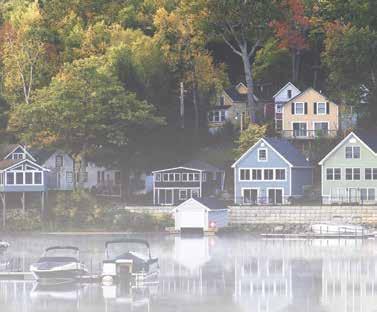




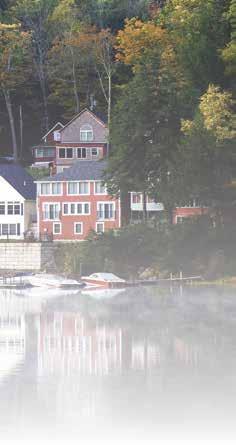
taining wall blocks.
Reuse materials that are lying around your garage or basement as planters. Examples are old pots, a traditional bicycle, a colander, old tires, or a ladder. Another option is to decorate a tree stump.
Add a trellis to provide a backdrop for your yard. Add a colorful coat of paint to make it pop against the greenery.
Install string lights as outdoor lighting transforms yard atmospheres instantaneously. Weather-resistant LED string lights are an excellent solution, especially near a deck, she-shed, or patio.
A rock garden, also known as a rockery or alpine garden, accentuates various stones, boulders, and pebbles. Small, big, gray, or brown, your rock garden will enhance areas that have stony soil and rough terrain.
Vertical gardening is a great way to add greenery to small spaces and create a special focal point in your landscape. Unlike traditional gar-

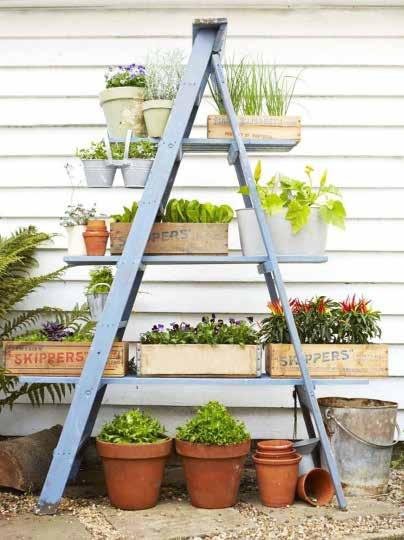
dens, vertical gardens present plants within a small horizontal area by creating vertical space. Sheer rock walls, ladders, or even bookcases can be used for this effect.
Container gardening can be embraced to infuse your backyard with lush greenery and vibrant blooms, even in the smallest of spaces. Successful container gardening requires strategic planning. One should group plants with others that have similar care requirements. Be certain to ensure proper drainage by selecting containers accordingly.
The following are some improvements that may be somewhat more costly, time-consuming, or require greater skill than the aforementioned:
Rather than investing in pricey patio materials, consider embarking on a DIY project to construct your own patio or deck using affordable materials such as gravel, concrete, or reclaimed bricks and pavers. You can create your








Meet the next generation of home heating A fully electric heat pump solution for freezing temperatures.
Delivers up to 100% heating capacity down to 5°F at 2.1 COP
Up to 19 SEER2 and 10 HSPF2”
Equipped with an A2L refrigerant, R-454B

Key Heating & Cooling proudly recommends and installs the Bosch IDS ULTRA Heat Pump. Designed to keep you and your family warm even on the coldest nights. Powered by Bosch inverter technology, the Bosch IDS Ultra Heat Pump is the first Bosch air-to-air heat pump designed to provide reliable, energy efficient heating ( and cooling!) even in sub-zero temperatures. This cold climate heat pump can provide 100% heating down to an outdoor temperature of 5° F and will continue to initiate heating even down to -13° F. The Bosch IDS Ultra Heat Pump is the first Bosch air-to-air heat pump designed to provide reliable, energy efficient heating even in sub-zero temperatures.


own stylish vacation cabana feel by securing tall wooden poles in planter pots with concrete in the bottom or fastening them to the side of a deck. Tie rope or wire across the top to hang semi-sheer curtains as your privacy screen. For extra ambiance, string cafe lights across the top.
Lawns can be expensive to maintain and don’t always blend with the natural environment. More and more landscape professionals recommend that we consider letting part of our yards go wild—leave it unmown and plant wildflower seeds to grow native plants. Those wildflower gardens will look beautiful, attract local wildlife, and save you money on lawn-care products at the same time.
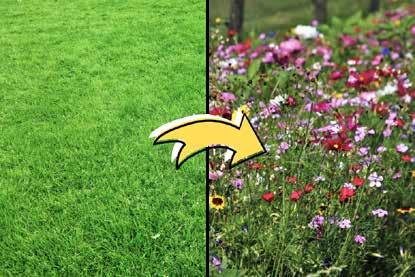
Every backyard needs a seating area, but furniture can be another big expense. Why not make your own? Whether it’s an outdoor sofa, daybed, recliner, coffee table, dining table, or more, you can use salvaged materials—pallets, barrels, old tires, or whatever is available for little or no cash.
Designing and constructing benches gives complete creative control. Materials like reclaimed wood or concrete are especially useful. Placement adjacent to a fire pit or fireplace provides a central activity space for family and friends.
Some parts of your yard might not fit your aesthetic. A pri-
vacy screen can be a great addition to any outdoor area where you have to keep trash cans and other unsightly elements hidden.
A technique that necessitates greater skill and planning is the Pea Gravel Patio. Pea gravel can lend an Old World feel to any outdoor space, also it won’t crack like a solid-surface patio may. According to landscapers, using pea gravel is less demanding on a budget. If pouring a new concrete patio or adding pavers isn’t an option, clear a patch of grass in your yard using a cultivator, then lay landscaping fabric and fill the space with gravel. This technique creates an attractive alternative to most other patio options.
Use an old table or scraps of plywood to create a space to hold pots, planters, soil, and gardening tools. Make sure the surface is about waist high to make it easily accessible.
Depending upon your homeowner’s budget, planting trees is a fantastic way to add beauty and value to your landscape. Trees provide numerous benefits, such as reducing carbon dioxide. Each of these techniques provides opportunities to enhance the beauty of your backyard while having a positive impact on your quality of life. An added bonus is the contribution each improvement makes to the value of your property.

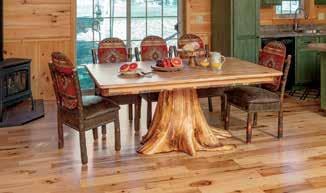
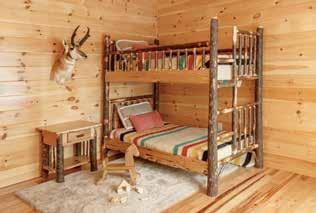


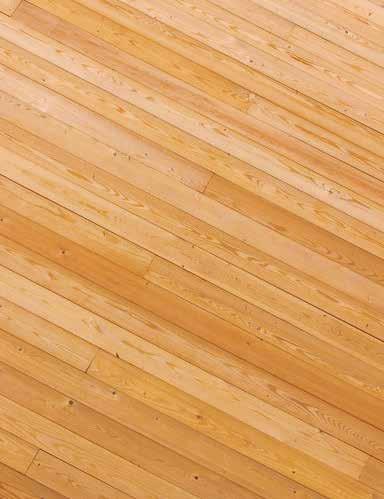

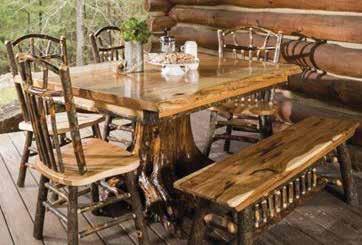
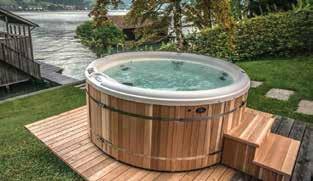
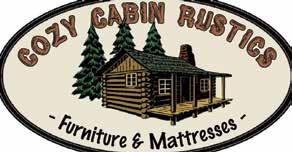

By Mike Moore

Game night is one of the more popular family traditions, and when the warmer days and nights of the summer months in New England finally arrive, there is endless opportunity for the whole family to get some fresh air while getting their game on. It doesn’t require a lot of prior planning or deep pockets to ensure non-stop entertainment for family and friends all summer long.
Dozens of games and activities can take place in even the smallest of yards. Yard bowling, ring toss, or even super-sized tic-tac-toe are easy games to set up and enjoy. A similar style game to play when space is limited is cornhole, one of the world’s
most beloved games, enjoyed by people of all ages. Sometimes referred to as “bag toss”, cornhole consists of two boards with a six-inch hole centered about nine inches from the top on each board. In the official rules, the boards are placed 27 feet apart and raised to a 10-degree angle. Players stand by each board and alternate throwing bean bags toward to hole in the board opposite them. The scoring is simple enough. A bag that makes it into the hole is worth three points and a bag that lands on the board and stays is worth one point. Typically, the winner is the first to 21 points. Cornhole sets can be purchased, or can make a quick and easy DIY project.

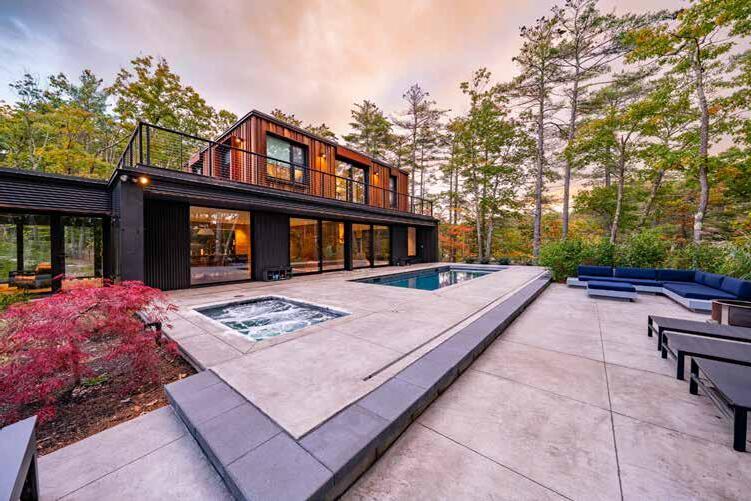


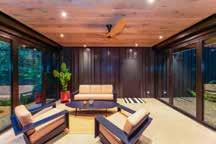



Bocce, also known as bocce ball, is a backyard sport that is believed to have originated in ancient Egypt. Much like cornhole or ladder golf, the game requires a slim stretch of space in the yard, but the court is much longer than cornhole, with the official rules calling for a court around 90 feet in length. For more casual backyard games, though, the length of the court can vary between 20 and 60 feet. In bocce, two teams of two toss their bocce ball along the court, vying to land it closest to the pallino, a smaller ball that serves as the target. The team with a ball closest to the pallino scores the point for the round. This game doesn’t require construction and can be played right on the lawn, but for the serious bocce baller, a court can be constructed of sand, turf, or crushed stone.
Horseshoes might be the unofficial outdoor game of New Hampshire. Though it requires a little bit of labor, installing a horseshoe pit right on your property can turn your home into the social gathering spot of the neighborhood. The game is simple enough. Each player or team takes turns throwing horseshoes at the stake in the pit on the opposite side, with the winner being the first to 21 points. Hook the horseshoe around the stake for a ringer and get three points, and earn a point for a shoe that leans on or touches the stake. Digging out the pit and installing the stakes involves a few prior tasks. Some towns do require a call to ensure the spot chosen to dig doesn’t have any underground wiring or pipes that could be damaged. Once the right location is found, the pits should be 50 feet apart. The pit area can be marked out in various sizes, though the regulation measurements are 31-36 inches wide and 42 to 72 inches long. For a fancier-looking setup and to keep the shoes from bouncing off too far, add some landscape timbers as a border around the pit. Once the dimensions are marked, the pit doesn’t have to
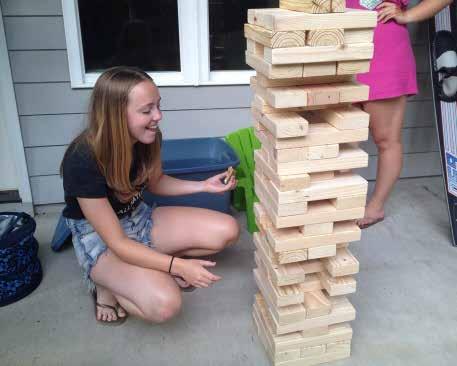
be dug too deep, just enough to cover the area surrounding the stake with sand or softer dirt. The stake stands 14 inches tall in the center of the pit.
Jenga has been a popular family game night choice since it first arrived on the shelves back in 1983. For some supersized family fun, creating a giant Jenga set is easy to do and provides countless hours of quality time outdoors with loved ones. Just like in the table game version, giant Jenga is played with 54 blocks that are exactly three times as long as they are wide, so it stacks evenly. Picking up some 2x4s (or larger sizes for those wanting to test the limits of giant) and a saw at the local lumber yard will be the primary components needed to craft the game. Simply
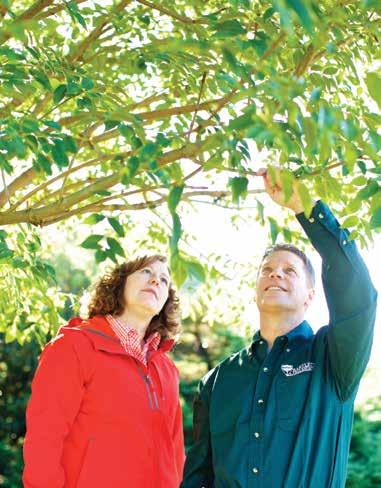

measure and cut all 54 blocks of wood to the exact same size.
For those wanting to make a carrying case for the blocks, a sheet of plywood can be utilized for that task.
To create a handy carrying case for the yard game, measure the plywood to the appropriate size, adding a little extra room so there will be no trouble loading and unloading the large pieces. For those wanting a more rustic look to their giant Jenga, the pieces would be ready for play at this point. For the folks interested in adding a little finish work to the hand-crafted game, the pieces and case can be sanded, stained, and even have a wood finish like linseed oil applied to keep the pieces sliding with ease. Not interested in the manual labor it takes to create this yard game? Amazon, Walmart, and LL Bean all have a variety of brands and sizes to choose from. Once the work is done or the purchase is made, Giant Jenga can be the hit puzzle of the summer for family and friends enjoying the weather up in the Lakes Region.
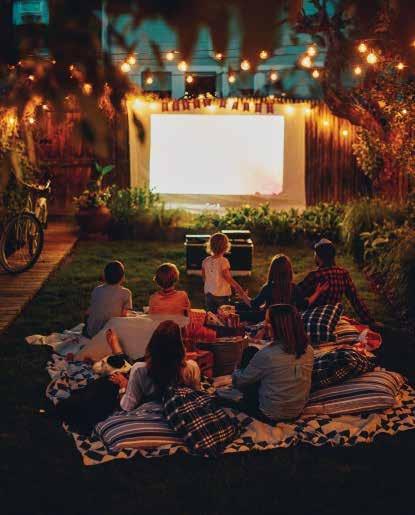
Summertime outdoor activities aren’t just limited to the daytime. Enjoy the cool breeze off the lake and take in the family’s favorite film out in the backyard after the sun sets. Whether you

take the simplistic DIY approach and point the TV out the living room window or use a projector and screen, it’s perhaps most important to make sure everyone has a comfy seat and tasty snacks. Projectors and screens can be found at any electronics store or online, and there are plenty of instructional videos that can help with proper setup and wiring.
There are so many other simple outdoor activities to enjoy right out in the backyard. Having old college friends up to visit and want to recreate the old days? Set up ladder golf or play giant yard pong. Get to know the neighbors better and invite them over for a few sets of badminton or volleyball. Want to keep the kiddos entertained, simple games like hide-and-seek, capture the flag, or Red Rover can be a delight for everyone, and easy
to set up and organize. Enjoying the beautiful, warm-weather months in New England doesn’t always have to entail packing up the car and venturing out. There are so many ways to create lasting family memories right off your doorstep. Before long, Mother Nature will make it harder to go outside for fresh air and exercise, so make the most of every opportunity the summer offers.

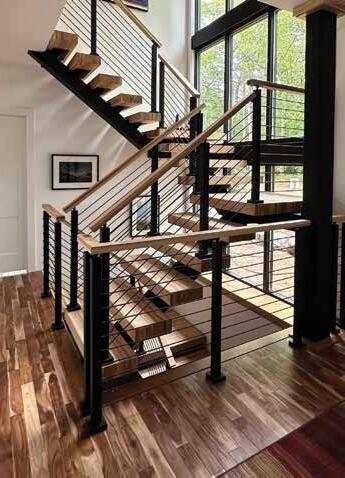



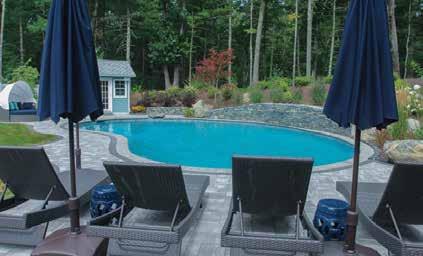
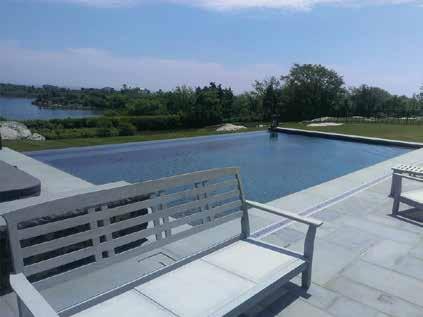




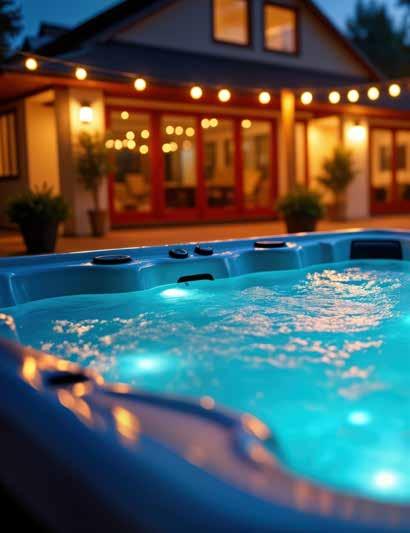
Summer in the Lakes Region is pure magic — long days, sparkling skies, and just the right amount of “do nothing” energy. But for more and more homeowners, summer bliss doesn’t stop at the shoreline. It’s happening right in the backyard, where pools and hot tubs are turning lawns into personal resorts.
Whether you’re all about the splashy fun of a pool or dream of slipping into a warm soak under the stars, there’s never been a better time to dive into the world of backyard water features. From sleek swim spas to family-sized soakers and pool designs that could grace a luxury magazine, today’s choices are more exciting — and more attainable — than ever.
Gone are the days when backyard pools meant a big blue rectangle with a diving board. Today’s pools come in all shapes and sizes, tailored to fit your space, style, and lifestyle. Think of them as part centerpiece, part playground, and part cool-down zone.
In-ground pools remain the gold standard. Whether you go with fiberglass, vinyl liner, or concrete, each option offers distinct advantages. Fiberglass is quick to install and easy to maintain, vinyl is typically more affordable and allows for some customization, and concrete is the most flexible in terms of shape and design. Homeowners are now incorporating features such as shallow sun shelves for lounging, built-in benches, color-changing LED lighting, and even water and fire features that transform the entire space into a showpiece.
If you’re working with a smaller yard — or just a smaller appetite for construction — above-ground pools have come a long way. Modern versions are durable, aesthetically pleasing, and can be seamlessly integrated into a landscape with surrounding decking or stonework.

Another rising trend is the “spool” — a small pool with spalike features that fits into more compact backyards. It offers a luxurious place to stretch out and relax without requiring a full yard renovation.
Let’s not forget the timeless appeal of the hot tub. These bubbling backyard retreats are perfect for year-round use — and in New Hampshire, they often shine brightest in the colder months. Imagine slipping into steaming water on a snowy evening, surrounded by pine trees and stars. Today’s hot tubs come loaded with options, from ergonomic seating and adjustable jets to app-controlled temperatures and built-in Bluetooth sound systems. Saltwater systems are also gaining popularity for their gentle feel and easy maintenance.
If you want something that can double as a fitness feature, consider a swim spa. These elongated tubs include powerful jets that allow you to swim in place and are also equipped with hot tub seating. Swim spas provide an ideal mix of exercise and relaxation in one compact, all-season unit.
Adding a pool or spa is about more than just water. The best backyard designs incorporate them into outdoor living spaces that feel as comfortable and stylish as the inside of your home. Stone or composite decking can frame the space beautifully, while pergolas and umbrellas offer shade. Fire pits and outdoor lighting extend your enjoyment well into the evening hours. Thoughtful landscaping adds privacy and visual appeal, with hedges, climbing vines, or fencing creating a secluded, resort-like feel.
Of course, the investment depends on what you choose. Above-ground pools can range from $5,000 to $15,000, while in-ground pools start around $40,000 and can go well beyond
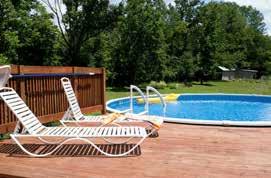
$70,000 depending on features and materials. Hot tubs range from about $4,000 to $15,000 or more, with swim spas often landing in the $15,000 to $30,000 range. Many homeowners tackle these projects in phases — starting with the core installation and adding decking, outdoor kitchens, and landscaping over time. Financing options are widely available, helping homeowners spread out the cost while enjoying their upgrades sooner.
One big advantage of doing this here in the Lakes Region? Local knowledge. The terrain, the seasons, and even zoning rules can vary across the region, and working with professionals who live and work here makes all the difference. If you’re thinking about taking the plunge this season, take a look at the pool and spa specialists advertising in this magazine. Many offer design consultations and maintenance services to help you get the most out of your investment.
Your backyard doesn’t need to be massive to make a big splash. Whether you go all in with a custom in-ground pool or keep it cozy with a hot tub tucked into your patio, the key is creating a space that invites you to slow down, relax, and enjoy the beautiful summer days — and nights — we’re lucky enough to have right here at home.~ This article was created with the help of AI and edited by The Laker.
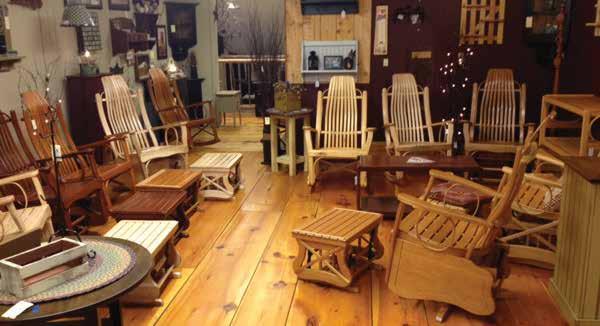
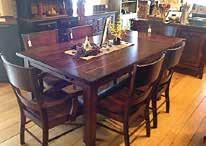

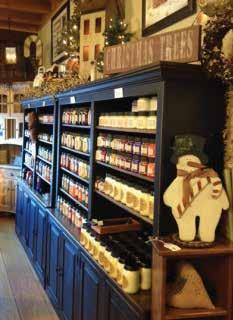

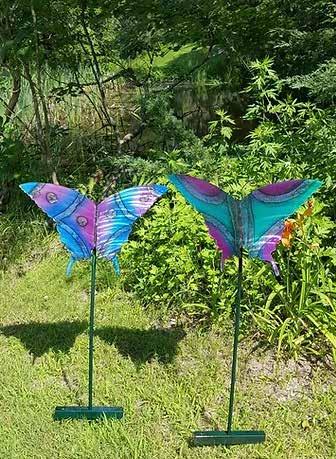
By Kathi Caldwell-Hopper
Nature inspires artists, which is visible in their paintings, drawings, and other artwork. It is the primary inspiration for the breathtakingly beautiful steel welded pieces by YK Metal Arts/The Torchcutters.
Kathleen Krzewinski and her husband, Larry Young, create each piece from a home studio on their property in North Wakefield, New Hampshire.
Says Kathleen, “I was born outside of the United States, in the Netherlands. Later, my family moved to the Philippines, and I was taking painting lessons from a young age.”
Eventually, Kathleen and her family moved to Texas. She took painting lessons but says her heart wasn’t really in it. The day her teacher shared that she was working with welding and needed some assistance was a turning point, and Kathleen knew then, at age 8, that this would someday be her career path.
It was, however, a long road to get there. “I started college but stopped when I married,” Kathleen explains. “I met Larry in Texas and he had attended college for welding. He knew I wanted to work with metal, so he taught he how to use a torch and to weld.”
One of Kathleen and Larry’s customers discovered their welded art while in Texas. He mentioned that his parents had a shop in Massachusetts called the Silver Buffalo and thought the shop would be a perfect place to sell Kathleen’s metal pieces.
“When we thought about moving to New England, I was intrigued by Cape Cod. We considered moving there but eventually opted to move to New Hampshire,” Kathleen recalls. “We got eight acres of land and built a shop/studio. We also renovated an old barn where we live and work.”
The reasons for the big move from Texas to New England were many, but it all came down to two things: the weather

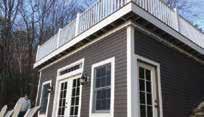
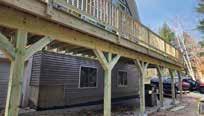

and the beauty in New Hampshire.
Kathleen comments, “It was the peace and quiet, but mainly it was the cold climate and snow. I am a true snow baby. I grew up with snow, and I wanted to get back to the cold.”
She continues, “I love the snow, and honestly, it’s good for the work I do. Metal work is hot, and the cold is great. Bugs and heat like in Texas... not so much.”
After relocating to New Hampshire, the couple was immediately amazed at the state’s beauty. They were awestruck by the impressive trees, the wildflowers, and the many birds and bugs. Coming from Texas, they had never seen such inspiring things, and these quickly became the subjects for Kathleen’s metal work.
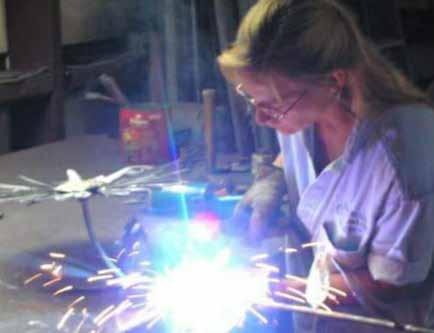
the simple yet intriguing and beautiful dragonfly.
“We made the first dragonfly in 2006, and it debuted at the Sunapee League of Craftsmen’s Fair,” she says. “The dragonflies were immediately very popular, and now we mostly make them just for the fair each year.”
The dragonflies are extremely time-intensive to craft. Kathleen explains the painting process required to create the end product: she must keep each piece spotless, with no rust, add three to four layers of color, and finish by sealing for ultimate protection. The result is a highly durable and attractive dragonfly that looks perfect in any garden or outdoor spot.
“Birch trees are my favorite, and I include them in many of my designs,” she says. Wall décor metal work includes such beautiful pieces as a fish jumping from the water, a bird perched on a birch bark tree limb, a deer, and a giant flower, to name but a few. The pieces are truly amazing in their detail and fine crafting; each is a work of art.
Kathleen and Larry create steel pieces they hand-cut individually with an ox/acetylene torch. Each piece is hand-filed and finished for painting or heat coloring, then sealed with clear lacquer.
“We can create whatever our customers request, from yard to wall pieces,” says Kathleen. Among the most popular items is
Collectors clamor for the dragonflies, and Kathleen says one customer has, over time, ordered 14 to 15 pieces and has them on display in her garden area.
Graceful butterflies are also very popular with YK Metal Arts clients. “We enjoy making anything from nature, such as lightning bugs, bees, birds, and trees,” she says. The dragonflies are the most popular, but anything made by Kathleen and Larry draws attention.
“Each piece is welded with a garden stake, so they stand up in the various outdoor areas where our clients place them.”
The creations are made with quality materials. They start with 1/8-inch thick cold-rolled steel. Each object must be pristine and free from rust before painting. Kathleen hand-cuts





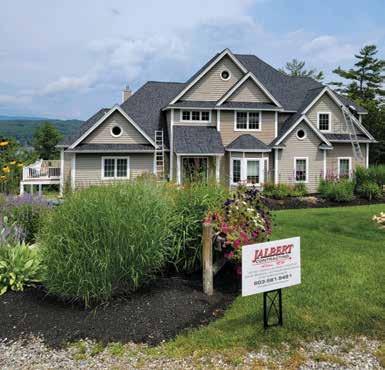

every piece with a gas torch.
She is an expert in the painting process and has a lot of experience with color work. Having worked in the automotive industry for 27 years, Kathleen knows how to use car paint for her outdoor art. “I love the automotive work – the parts, service, and everything about it. I use the old school paint in my metal art, and it is very durable.”
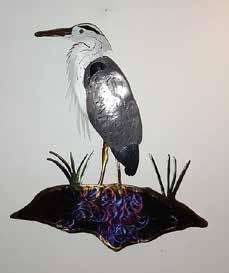
As juried League of NH Craftsmen members, Kathleen and Larry have metal art for sale at the Meredith League shop (and a few additional League locations around the state).
Their association with the League of NH Craftsmen started some years ago, and Kathleen remembers, “In 2001, we were featured on NH Chronicle. When a photographer saw the segment, he suggested we join the League. We were juried into the League in 2006.”
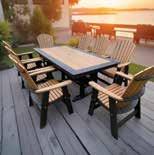
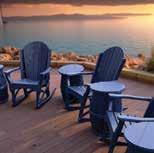

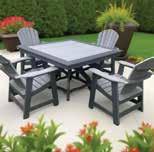
Clients eagerly look for the metal pieces Kathleen creates with Larry’s aid. “He has been a welder for 50 years and is very experienced. He might help me cut the wings for a butterfly, dragonfly, or other creations and weld them. We also do wall hangings with frames, and Larry makes the frames.”
Larry tries to help when he is not working. He uses his skills in his work at Energy Resources Group, a company that rebuilds steam turbines and energy components. Eventually, he will join Kathleen full-time in the studio.
Soon, another part of the plans at YK Metal Arts will come to life when a display room in the studio building is finished. It will provide a comfortable place for clients and new customers to be introduced to Kathleen’s creations. They can relax and enjoy a dazzling display of flowers, deer, butterflies, and more.
“We plan to keep doing the Sunapee fair every summer and look forward to opening our small studio soon. Also, I have been juried into the League as a mixed media carver, and I will be making stone sculptures as well as doing metal art,” Kathleen explains.
Each piece of metal art is an investment, and while they can be left outdoors year-round, most customers bring them indoors in the winter. “Some people leave them outdoors year-round, and they are durable, but each is a work of art. I advise covering each piece with car wax once a year for the best protection from the elements.”
Those who wish to see the range of work available at YK Metal Arts can stop by the Annual Craftsmen’s Fair presented by the League of NH Craftsmen at Mount Sunapee Resort in Newbury, NH. This year, the fair runs from August 2 to 10. Visit www.nhcrafts.org for further information.
To see a gallery of metalwork created by YK Metal Arts, go to www.ykmetalarts.com or visit them on Facebook.
Fun in the sun often involves playing in the water. Whether you’re soaking up some rays in a backyard pool, catching some ocean waves on a surfboard, or sliding your way across a Slip ’N Slide, there’s no shortage of ways to incorporate water into warm-weather recreation.
Water-based recreation makes especially warm days more comfortable, but caution must reign supreme when engaging in water play. The National Drowning Prevention Alliance offers the following safety tips to lower the risk of water recreation accidents.

• Brush up on your swimming skills. The NDPA reports that learning how to swim can reduce drowning risk by 88 percent. Adults and children alike are urged to go over the basics of swimming before getting in the water to ensure their skills are up to the task. If possible, practice the basics in the shallow end of a pool to reacclimate your body to swimming. Parents can keep a watchful eye on their young swimmers to ensure they haven’t forgotten how to swim since last season.
• Never swim alone. Swimming with a partner is a fun way to stay safe. The buddy system ensures someone is there to look after swimmers and offer help if a swimmer is struggling. A buddy can also call for help by alerting a lifeguard when swimming in a public place such as a beach, lake, or community swimming pool.
• Stick to designated swimming areas. The flag system is often employed at parks, beaches, and lakes to indicate when and where it’s safe to swim. A red flag typically symbolizes that swimming is unsafe, whereas a green flag means conditions are welcoming for swimmers. Stick to areas designated as safe. The NDPA notes it’s always prefera-
ble to swim under the supervision of a lifeguard.
• Err on the side of caution. The NDPA notes it’s best to get out when in doubt. If water conditions don’t feel right, exit the water. Falling rain, rough currents, muscle cramps, and/or physical fatigue can quickly transform a fun swimming session into a dangerous situation. Get out of the water at the first sign of doubt. You can always return later if your physical condition and/or the conditions in the water change.
• Be an educated swimmer. Savvy swimmers know to check the local forecast, including water conditions, before getting their toes wet. The NDPA notes it’s unsafe to swim in the rain, particularly if there is thunder and lightning. That’s true whether you’re swimming in an ocean, a lake, or a backyard pool. A wetsuit can help keep the body warm when water temperatures are low, but the NDPA notes such swimming sessions should be brief. In addition, the NDPA notes that swimming in a wetsuit when water temperatures are between 75 and 80 degrees could lead to heat exhaustion.
• Don’t swim after consuming alcohol. Swimming and alcohol are a bad mix, as the NDPA notes that alcohol impairs balance and coordination, both of which are vital for swimming. Alcohol also increases the likelihood of risky behavior, which can be hazardous when in the water. Water-based recreation helps make warm weather seasons even more fun. But safety must be the utmost priority when having fun in the water. Additional water safety strategies can be found at ndpa. org. ~Metro

Home renovation projects are significant undertakings. Some projects are simple and do not require residents to adjust much, if at all. But larger projects can take several weeks or even months, and such renovations pose a unique challenge, particularly for homeowners who have young children.
Children are curious by nature, and that curiosity can be dangerous during home renovations. Homeowners preparing to renovate their homes can keep these safety strategies in mind to protect their children during the project.
• Let contractors know there are children in the house. Keeping kids safe can be a collective effort that involves homeowners and the contractors working in their homes. On the day contractors arrive, remind the project leader that there are kids in the house and request that he or she let staff know there will be curious youngsters around. Contractors can seal off rooms being worked on at the start of each day, and then do so again before leaving for the night. Many contractors have children of their own at home, so if they know youngsters are in the house, they might be especially mindful of safety and less likely to leave tools or potentially harmful debris out overnight.

• Inform children that certain areas are now off-limits. Parents can inform and routinely remind children that spaces being renovated are off limits until the project is complete. Explain why it’s important that everyone in the house, including adults, must respect this rule. Of course, kids don’t always listen to Mom and Dad, so this step likely
won’t guarantee kids will steer clear of sealedoff areas. But explaining to kids why they need to avoid the areas can be more effective than just telling them to avoid project spaces.
• Set a good example. It can be tempting to peek in on spaces being renovated when contractors go home for the day, but parents should know children may be watching them. If you’re curious about the progress, ask the project manager to show you a space during the day while children are at school. If it’s summertime and kids are home, you can still ask, but do so with your children so they won’t think you’re being sneaky, which will only add to their curiosity.
• Turn off the electricity in rooms being renovated when contractors go home. Speak with your contractor and ask if it’s alright to turn off the power to rooms being worked on at the end of each day. If so, this can remove the risk of kids sneaking into spaces and turning on power tools at night or getting hurt while poking around exposed electrical wires.
• Hire a cleaning service once the project is complete. Once the job is finished, hire a professional cleaning service to clean all areas that were worked on. This increases the chances that small but potentially harmful remnants, such as nails or staples, are gone before kids start using the renovated spaces.
Renovation projects can last for weeks. Parents of small children must take steps to keep curious kids safe while a home is being renovated. ~Metro


Gardening is a rewarding hobby that provides a great reason to get outdoors. Getting one’s hands dirty in the garden often pays off with a colorful, awe-inspiring, and aesthetically appealing finished product.
Perennials are plants that live multiple years. Even though perennials may die back above ground each winter, their roots remain alive, which is why the colorful blooms typically return anew once warm weather makes a comeback. Gardeners who want to capitalize on the hardiness of perennials can consider these plants for their gardens this season.

• Coreopsis: Coreopsis are perennials that thrive in a wide range of conditions, including various types of soil. So gardeners who find their soil is predominantly clay, as well as those with sandy soil, may be able to successfully plant coreopsis on their properties. Better Homes & Gardens notes coreopsis are native to the United States and produce colorful blooms that can withstand hot and dry weather throughout the summer.
• Russian sage: Russian sage produce purplish-blue flowers that BHG notes retain their color for weeks. Russian sage can be planted in a variety of hardiness zones defined by the U.S. Department of
Agriculture, and many gardening experts recommend them to gardeners whose local climates tend to be especially hot and dry.
• Hellebore: BHG notes hellebore are ideal for gardeners who want some color in the early days of spring. Hellebore, sometimes referred to as “Lenten Roses,” have an early flowering season, so their blooms, which can be pink, white, purple, yellow, green, rose, or purple, can be a welcome sign in spring.
• Baptisia: Gardening experts note these purple-blooming perennials thrive in the sun. Gardeners who want perennials with particularly long life expectancies can consider baptisia, as experts note they can live for many decades. Baptisia are drought-tolerant, and they can grow in soil that may not be considered great for other plants.
• Coneflower: The unique look of coneflowers has generated many enthusiasts of these perennials that bloom from early summer to fall. Coneflowers are highly adaptable, making them capable of growing in various zones and soil types. Once established, coneflowers are considered very drought-tolerant.
Perennials can add aesthetic appeal to landscapes year after year. Gardeners are urged to speak to experts at local gardening centers to identify the perfect plants for their gardens. ~Metro



Founded in 1880, our organization is dedicated to the service and caring for trees. As a valued client, you receive the benefit of commitment and service for your local brand, backed by local and national resources.
• Tree and Shrub Pruning
• Tree Removal and Stump Grinding
• Tree Cabling and Bracing
• Tree and Shrub Planting & Installation
• Plant Health Care Monitoring Programs
• Tree and Shrub Sub-Surface Fertilization
• Insect & Disease Prevention and Management
• Comprehensive Lawn Care Application Programs
• Lawn Fertilization
• Lawn Overseeding and Aeration
• Deer Repellent Applications
• Tick Treatments
• Mosquito Control
• Organic Mosquito and Tick Control
• Organic Lawn Care
• Organic Insect and Disease Management
• Air Spading
* Not all
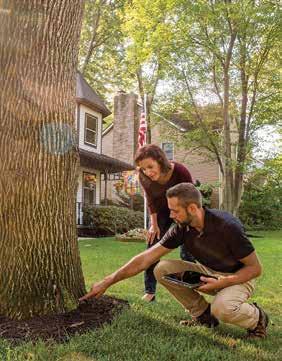
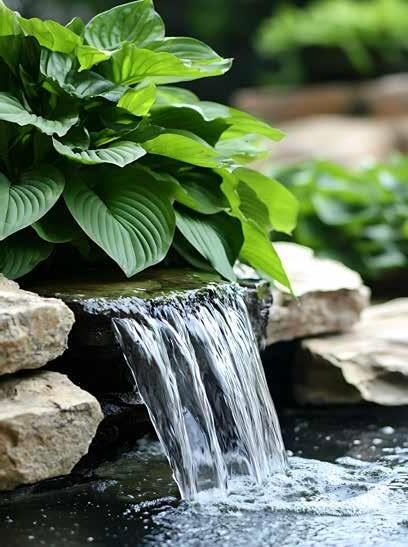

By Mark Okrant
The allure of water has fascinated humanity for centuries. Whether it’s the gentle lapping of waves along a beach, the tranquil flow of a river, or the serene ambiance of a fountain, there’s something inherently calming about being near water. Beyond the aesthetic appeal, there are profound psychological benefits to spending time near water features. In this article, we will examine some of the benefits, then look at several options that can be used to create a feeling of serenity adjacent to one’s home.
There is no denying that fountains, ponds, pools, and waterfalls make your spaces more beautiful and serene, but what benefits do they provide? A water feature provides soothing and serene sights with sounds that improve a person’s physical and mental well-being. In addition, heart rate, blood pressure, and other measures return to normal levels more quickly when people look into nature rather than being overpowered by urban landscapes. Scientists tell us that falling water releases negative ions into the surrounding atmosphere and has a profound effect on our physical well-being. It does this by increasing our energy level. Air consists of positive and negative ions, and the body is better when the air has a slightly negative charge; this is something water features assist with. Flowing water releases negative ions into the air to increase your energy level and calm feelings, and lower depression. Water features also refresh and purify the air, so one feels energized and ready to tackle new projects.
Falling water lowers blood pressure. The soothing, calming benefits of water features contribute to relaxation in the body, with blood pressure lowering and with it, our risk of various physical health problems like stroke, angina, anxiety, and coronary artery disease, among other heart issues.




As an extra benefit, water provides a natural habitat for both fish and plants. Homeowners can bring life into the ponds and fountains in their backyard. Koi fish need a fair ly large amount of space to swim around; meanwhile, goldfish can survive in much smaller ponds. Larger water features and fountains can be enhanced by pond plants that serve as natural elements and decorations. Water lettuce and water lilies are the most preferred plants, having the benefit of low cost and minimal maintenance.
A benefit of most water features is that they are easy to maintain. One should make abundant use of natural sunlight, as water features are even more beautiful when they have sun light shining through their water streams. Furthermore, water cools the surrounding garden and makes it a pleasant place to enjoy. It also enables you to have aquatic and semi-aquatic plants growing in the garden. Running or still water in the garden gives a cooling and blissful effect. The water used in fountains and ponds needs to be crystal clear, hence simplifying the maintenance process.

added to a backyard or garden: Pond-less waterfall—the area below a waterfall is designed to serve as a catchment basin and is carefully disguised with vegetation; this allows water to be trapped and recycled so that it flows repeatedly over the falls, making a continuous, relaxing sound. These waterfalls are low-maintenance and can be customized for any space, adding a natural element to your outdoor area.
Patio pond—These small ponds can be placed on a deck, patio, porch, or balcony, creating a tranquil oasis in a small space.
What follows are some backyard water features that can be
Rock waterfalls—a sizable vertical waterfall makes a striking visual statement when positioned against a large wall or screen. It’s versatile, therefore suitable for placement in a pond or as the focal point of a pond-less setup. One can enhance its aesthetic by incorporating a few substantial accent rocks to create a harmonious landscape. Complete the picture with a selection of appropriate plants and pebbles, complemented by pond and garden lighting to bring a touch of magic to your backyard. These waterfalls are designed to mimic natural water fea -








tures, adding a sense of nature to one’s garden.
Fire and water features—combine the calming sound of flowing water with the warm glow of flickering flames, creating a cozy and inviting atmosphere. This combination is pleasing to a wide range of homeowners.
The Serenity Buddha Water Feature is more than just a decorative element; it is described by its creators as “an oasis of peace and serenity.” The fountain has a detailed Buddha design that brings a touch of Zen to any space, transforming a garden into a soothing meditation area.
The Low Zen Sphere Fountain—is a cast stone fountain that is designed to complement one’s outdoor space. There is a graceful flow of water from the sphere’s top into its basin below . . . a mesmerizing visual.
These are but a few of the numerous options available to transform an otherwise ordinary backyard into a place that is enjoyed by all members of a household and their friends. Most of these products are easily installed and can be adjusted according to variations in the size, topography, and availability of a water source on the property.
Currently, regardless of one’s political, economic, religious, or social standing, we are living in stressful times. Most of us are looking for simple releases for the anxiety that builds up on a day-to-day basis. Some of us are able to find a release in the pages of a good work of fiction, or by engaging in a particular sports event. However, for others, these releases do not do the trick. Therefore, having a calming environment within steps of one’s backdoor is a very attractive, inexpensive - and potentially, lifesaving – alternative.




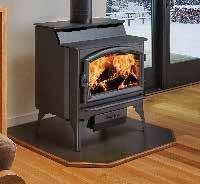
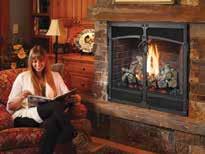
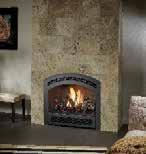
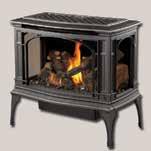
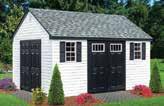
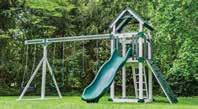
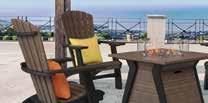
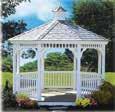
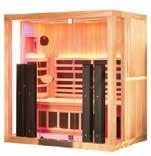
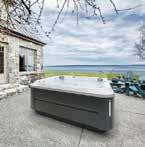
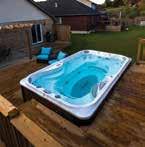
Games can enhance any outdoor function. Whether at the beach or in one’s backyard, activities can keep guests entertained in between the food and other refreshments. And the good news is that most games designed for these types of functions are appropriate for players across a wide range of ages.
The following are eight games that can add to the excitement of any outdoor gathering.
1. Ladder toss: Also known as ladder golf, this game requires players to toss string-attached balls onto a ladder-shaped target. Points are awarded depending on which rung the ball lands on.
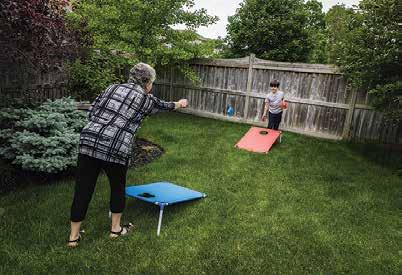
2. Kubb: Pronounced “KOOB,” this Swedish lawn game is believed to have originated during the era of the Vikings and is best described as a blend of bowling and horseshoes. Two teams compete to knock over their opponents’ wooden blocks by throwing batons.
3. Cornhole: Many people have played cornhole, which involves tossing bean bags at the cornhole board, The objective is to get the bag into the hole or on the board to score points. The game can be played as singles or doubles. The first team to reach 21 points wins.
4. Spikeball™: Also called Roundnet, this two-on-two sport is


played by hitting a ball off a net with the goal of preventing the opposing team from returning the ball within three touches.
5. Ring toss: This is another game that tests hand-eye coordination. Players take turns tossing the rings onto the target pegs. Each peg is worth a different number of points. The first player to reach the agreed-upon number of points wins.
6. Connect four in a row: Giant versions of familiar tabletop games are also available for yard use. With this game, players need to get four chips in a row, either up and down or diagonally.
7. Kan Jam®: Similar to cornhole or horseshoes, Kan Jam® features two teams of two that alternate between throwing a frisbee and trying to deflect it. The goal is to get the frisbee into the can.
8. Rollers: Goals are placed 25 feet apart and then players roll wooden discs to try to get closest to the goal. Each side of the disc has a different number to determine the point value.
Backyard events can be enhanced with some gameplay. There are plenty of fun options for your next gathering. ~Metro







For Sam Schwartz, the Lakes Region isn’t just a scenic vacation destination — it’s where his passion for hospitality and his childhood memories intersect. Today, as the owner of The Taphouse at the Coe House in Center Harbor, Schwartz is creating the kind of place he always wanted to return to — a warm,
welcoming bar and restaurant that feels like home.
“I grew up on the North Shore in Massachusetts — Essex, Gloucester, Marblehead,” Schwartz says. “We started coming up to Center Harbor when I was about seven. A family friend had a home behind Moulton Farm, and we’d spend our sum-

•
•
•
•



mers there.”
From ages 7 to 14, those summers shaped his love for the region. “I loved anything out on the lake,” he remembers. “We had a little Sunfish I’d take out almost daily, kayaking, swimming, just floating. And I’ll never forget watching fireworks over the lake in Meredith on the Fourth of July — all the reflections on the water. Or telling ghost stories by a bonfire while my brother snuck up behind me, growling like a bear.”
After high school and a brief “angsty” phase, Schwartz’s path took him far from the Lakes Region. He became a hospitality leader, helping to open and manage high-profile venues in major cities — including The Grand Delancey in New York’s Lower East Side, a beer hall that earned recognition from Imbibe Magazine as the “Best New Beer Bar of 2019.”
“It was one of the biggest projects I worked on,” Schwartz says. “Fifty draft lines from around the world, and one of the only places in NYC that could host multiple large parties at once. We were beer nerds — and we were proud of it.”
Another highlight: Brewery Saint X in New Orleans, a bar-

becue and beer spot that introduced him to a new world of Southern hospitality. “One of the most fun experiences was Hogs for the Cause. We smoked a whole hog for 48 hours. We came in second place. I was covered in mud and smoke and absolutely loving it.”
These projects gave Schwartz the foundation he needed to do his own thing eventually. “Both of my parents ran their own businesses — a lawyer and a CPA — so it was in my DNA,” he says. “But I knew I needed the right experience first.”
That experience, and his passion for creating meaningful guest experiences, has paid off in Center Harbor. At The Taphouse, Schwartz is building something that honors his roots while embracing a new vision.
“With The Taphouse, I want to create that neighborhood bar where people feel known and welcomed. A place where anyone can walk in and feel at home.”
The setting helps. “Sometimes I’ll be working a 14-hour day, running around nonstop — then I’ll stop and just see Lake Winnipesaukee through the window,” he says. “It catches me every time.”
The Coe House, a historic building with charm and character to spare, offered the perfect canvas. “When I walked through, I saw all the different rooms and thought, this is a place I’d want to visit three to five times a week and have a different experience every time.”
One of his favorite spaces is the cozy upstairs tavern. “It’s got this great old wallpaper, wood, and brick — just twelve seats. It reminds me of the bars my dad used to take me to, the ones we didn’t tell my mom about.”
Food is central to the experience, and Schwartz works closely with Executive Chef Chris Monteiro, a Plymouth, MA native















with a wide-ranging culinary background.
“Chris is the real hero,” Schwartz says. “He’s done fine dining, pizza, comfort food, and events. He just loves feeding people.”
A standout item on the menu is the Dublin Spice Bag, a dish Schwartz pitched based on late-night Irish street food. “It’s fries, sautéed peppers, onions, carrots, fried chicken, and mild curry sauce,” he says. “It’s a hangover cure — or maybe the cause of one. But people love it once they try it.”
Beyond dinner service, The Taphouse is built for community gatherings. The building includes seven distinct rooms, from small private dining spaces to a beer garden that holds up to 150 guests.
“We’ve got room for everything — business lunches, birth day dinners, weddings,” Schwartz says. “Our events coordinator, Meggin Anderson, has already been doing great work with local schools and fundraisers. We’re hosting the Lakes Region High School and Middle School baseball teams and planning a fund raiser for the football team’s stadium lights.”
And then there’s the music. “We have live acts every Thursday through Sunday all summer,” Schwartz says. “People like Dako ta Smart, who blends soulful classics with a country twist, and Tandem Chance, a duo with amazing guitar riffs and vocals. The best part? We’re bringing them back all summer — so if you love a set, chances are you’ll get to hear them again.”
Looking ahead, Schwartz is focused on sustainability — not just in ingredients and practices, but in culture as well.
“My hope is to have The Taphouse be here for a long time. I know faces will change, behind the bar and out front. But I want it to be that place where, no matter who you are, you walk in and feel like you belong.” ~ This article was created with the help of AI and edited by The Laker.





















Pets bring a lot of joy to people’s lives. Is it any wonder that, as of 2024, 66 percent of households in the United States, or 86.9 million homes, owned a pet, according to the American Pet Products Association? In fact, 97 percent of pet owners consider their pets to be family members. And according to Made in CA, 77 percent of households in Canada own at least one type of pet.
Introducing a pet into a home is not a decision to take lightly. In addition to the considerable financial investment associated with pet ownership, owners must devote time and energy to safeguarding the well-being of their pets. That includes reducing the chances that the animal becomes lost. The Animal Humane Society says it’s estimated that one in three pets will go missing in their lifetime. Many of those pets will not be reunited with their owners.
But people can do their part to protect pets from escaping or getting lost. Here are some proactive steps to take.
• Get pet identification. Take a multi-layered approach to identifying the pet, such as name and contact information printed on a collar tag. In addition, have the pet microchipped. A microchip is a small device about the size of a grain of rice that is implanted just under the skin. The microchip can be programmed to emit identification information about the animal when scanned. Pet parents should routinely check and update the chip’s data if they move or if there is a change in phone number or pet ownership.
• Consider a GPS-enabled collar. Another great tool is attaching a GPS-enabled device to a pet collar. In the event the pet cannot be found, pet owners can track the animal’s location using a mobile phone.
• Secure the home and yard. Check for any apparent points of
weakness around the home or yard. Is there a large gap between the bottom of the fence and the lawn that needs remedying? Is the gate latching securely, or does it pop open? Are all window screens secure, or could they be pushed out from the inside? Curious animals can quickly turn into escape artists, especially if there is a wild animal to chase or a scent they want to investigate. Securing the home can cut down on potential problems.
• Utilize obedience training. Working with a certified dog trainer or cat behaviorist can teach the pet to curb an instinct to bolt. If they start to run off, training can help pets develop adequate recall skills to come back when called. Trainers can also teach techniques to quell pets’ desires to dart when a house or fence door is open.
• Choose well-fitting collars and harnesses. A collar can be rendered useless if the pet is able to slip its head out, especially when a little pressure is applied. A martingale collar is a special collar that will safely tighten when the dog tries to pull away. When the dog loosens up the pull, the collar goes back to its comfortable position. Harnesses may be even more secure for escape artists because they attach around the midsection rather than the neck.
• Use leashes on pets. The animal should be on a leash whenever it is taken outdoors where there is no fence or secured area. Even the most well-trained pets may run off from time to time. Not to mention, leash laws exist in many areas for both the dog’s and people’s protection.
It’s important that pet owners take steps to prevent their furry friends from running away and getting lost. ~Metro






There’s something about summer that makes sweet treats taste even better. Maybe it’s the warm air and long days that call for something cold and creamy. Maybe it’s the fresh fruit ripening on local farms. Or maybe it’s the simple joy of gathering around the table to share a slice of pie or a scoop of ice cream with family and friends.
Whatever the reason, summer desserts hold a special place in our hearts—and on our plates. From homemade ice cream to freshly baked pies, these time-honored favorites remind us to slow down and savor the season.
Ice cream and summer go hand in hand, and Americans have been enjoying this frozen treat for centuries. In the 1700s, ice cream was a delicacy reserved for the wealthy. It became more widely available in the 1800s with the invention of insulated ice houses and hand-cranked ice cream freezers.
New England played a special role in ice cream’s early popularity. By the late 19th century, ice cream parlors were popping up across the region, offering scoops of vanilla, chocolate, and strawberry to locals and summer visitors alike. Ice cream socials became popular community events, especially during the warmer months.
Today, ice cream is more creative than ever. Local creameries are crafting small-batch flavors using milk from nearby farms and seasonal ingredients—think strawberry-rhubarb swirl in June, blueberry cheesecake in July, and maple walnut year-round.
The Perfect Pie: Fresh Fruit and Flaky Crust
Nothing says “summer” like a slice of pie made with just-picked fruit. June brings strawberries, July delivers blueberries and raspberries, and by August, peaches and early apples are ready for baking. Many home bakers look forward to this time of year, when the ingredients for the perfect pie are grown just down the road.
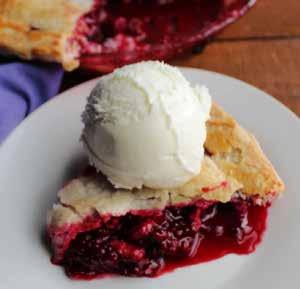
Pies are part of a long-standing New England tradition. For generations, they’ve been a staple at picnics, reunions, and summer fairs. Whether topped with a lattice crust, a buttery crumble, or a generous scoop of ice cream, a good pie is both a dessert

and a memory in the making.
While some prefer to bake their own, local farm stands and bakeries offer an abundance of fresh-baked options. Many use fruit grown on-site or sourced from nearby growers. There’s something special about biting into a pie made just hours after the fruit was harvested.
And for those who love the full summer experience, “pick-your-own” farms are a great way to spend a morning. Bring the kids, gather a basket of berries, and head home to bake a pie that tastes even sweeter because you helped harvest it.
Many of our favorite summer desserts have deep roots in New England food traditions. Blueberries, for instance, are native to this region and were once used by Indigenous communities for both food and medicine. Today, blueberry pies, muffins, and cobblers are mainstays of the summer season. Strawberry shortcake, with its fluffy biscuits and real whipped cream, remains a summer classic. Once a staple at country fairs


and Fourth of July celebrations, it’s now a favorite at backyard barbecues and casual dinners on the deck.
Even the humble whoopie pie—two cake-like cookies filled with creamy frosting—often makes a summer appearance at farm stands and bakeries. While these treats are typically associated with Maine or Pennsylvania, many New Hampshire bakers have made them their own, playing with seasonal flavors like raspberry, lemon, or s’mores.
A Few Favorite Stops
If you’re not baking at home, there are plenty of places to find exceptional summer sweets close to home. Here are just a few types of stops to look out for during the warmer months:
Ice Cream Stands: Open seasonally and often family-run, these spots serve everything from traditional hard ice cream to creative new flavors, plus sundaes, shakes, and soft-serve cones.
Farm Bakeries: Many local farms now have on-site bakeries offering pies, fruit crisps, muffins, and cookies made with their produce. These make for perfect picnic take-alongs or hostess gifts.
Roadside Markets: In addition to fresh vegetables and flowers, these markets often carry jams, preserves, and dessert-ready fruits like strawberries, peaches, and blueberries—ideal for turning into a quick tart or no-bake pie.
U-Pick Farms: Picking your fruit is a summertime ritual for many families. Some farms offer pre-picked fruit and homemade baked goods on-site, so even non-bakers can leave with something sweet.
Easy Summer Treats to Try at Home
Not every summer dessert needs to be a grand production. Sometimes, the best flavors come from the simplest ingredients.
Here are a few easy ideas that make the most of local produce:
Grilled Peaches with Ice Cream
Halve and pit ripe peaches, brush lightly with oil, and grill until just caramelized. Serve warm with a scoop of vanilla ice cream and a drizzle of local honey or maple syrup.
No-Bake Berry Pie
Toss fresh berries with a bit of sugar and cornstarch, then spoon into a graham cracker crust. Chill and top with whipped cream before serving.
Strawberry Shortcake Biscuits
Use a simple biscuit recipe or mix. Split and fill with sweetened sliced strawberries and fresh whipped cream. Add a dash of balsamic glaze or fresh mint for a twist.
Blueberry Crumble
Combine fresh blueberries with a bit of lemon juice, sugar, and cornstarch. Top with a mixture of oats, butter, flour, and brown sugar. Bake until bubbly and golden.
Summer moves quickly, but the memories made around the table tend to last. Whether it’s a cone shared after a day on the lake, a pie baked with fruit picked that morning, or an old recipe passed down through generations, these treats remind us what the season is all about.
In a time when life often feels rushed, summer desserts give us a reason to slow down. They’re sweet, yes—but they’re also rooted in family, tradition, and the joy of simple pleasures. So go ahead. Have that second slice of pie. Lick the ice cream before it drips down the cone. Celebrate summer with every bite.~ This article was created with the help of AI and edited by The Laker.



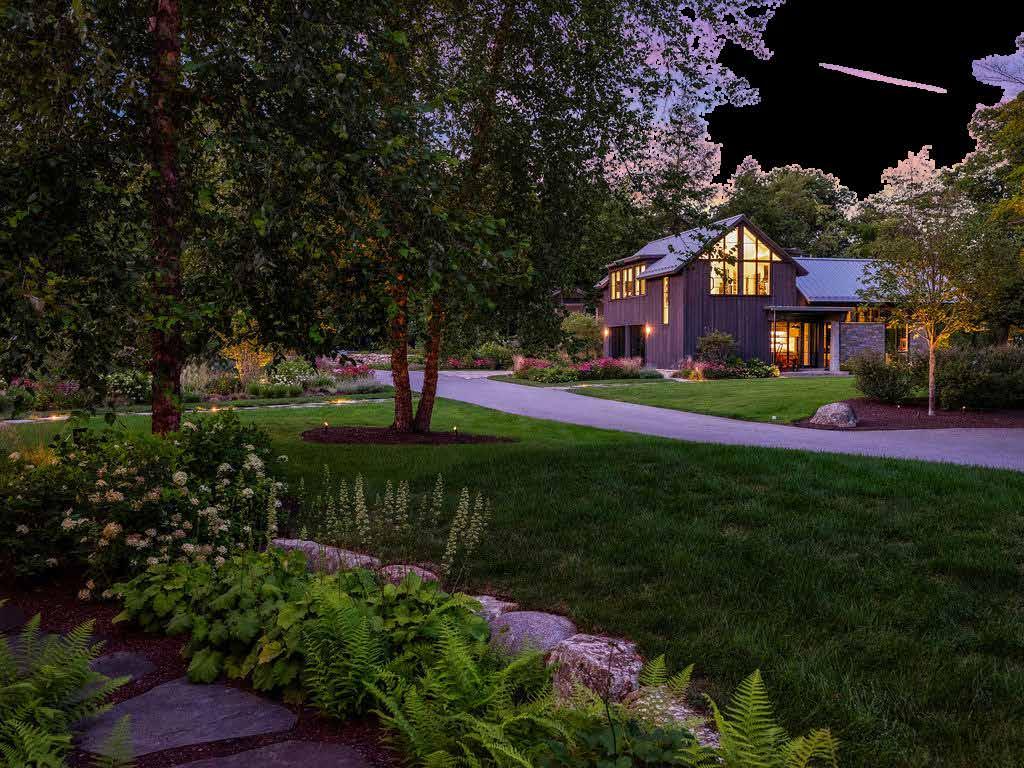


The threat posed by air pollution is more significant than many people may realize. According to the World Health Organization, almost 99 percent of the global population breathes air that exceeds safety guidelines and contains high levels of pollutants. The WHO notes that exposure is associated with seven million premature deaths each year.
Despite its prevalence, air pollution at such high levels is not inevitable. Individuals concerned about the threat posed by air pollution can take various steps to combat it, and such measures can prove even more effective when adopted on a wide scale.

oxide emissions in the United States. The Union of Concerned Scientists reports that studies have linked exhaust emissions like nitrogen oxide to adverse effects on various organ systems in the body. Driving less frequently can help curb the vehicle exhaust emissions that are contributing to air pollution across the globe.
• Drive less. Exhaust from cars is among the biggest contributors to air pollution. According to the United States Environmental Protection Agency, the transportation sector is responsible for approximately 45 percent of total nitrogen
• Do your homework before purchasing an electric vehicle. Electric vehicles (EVs) do not produce the exhaust emissions that have contributed so heavily to air pollution, and that has compelled millions of drivers to make the switch from gas-powered automobiles to EVs. In theory, EVs should be an ally in the fight against air pollution. However, that might come down to which type of EV drivers purchase. According to Cars.com, EVs tend to be heavier than similar gas cars, and that extra weight can cause tires to wear more quickly. In addition, Cars.com notes tires made for EVs are designed
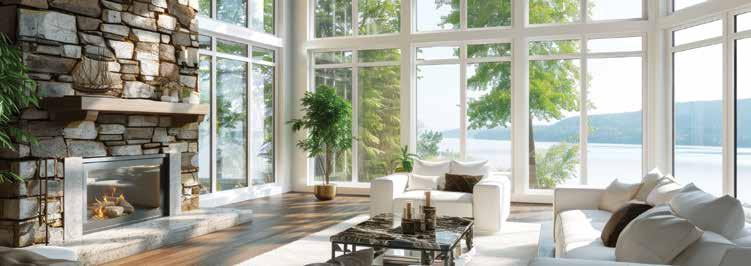



to provide reduced rolling resistance in an attempt to increase driving range, but still might not last as long as traditional tires on gas-powered vehicles. Tire wear and the resulting road dust pollution can affect air quality. These variables underscore the significance of doing your homework before purchasing an EV. Industry experts note that more research into the effects of the non-exhaust emissions produced by EVs is necessary, but in the meantime, car buyers can conduct their own research and determine if purchasing an EV is an effective way for them to combat air pollution.
• Consider additional electric-powered alternatives. Even if drivers are hesitant to purchase an EV, they have other options to reduce their reliance on gas-powered products. Gas-powered lawn care products like mowers and string trimmers can be significant contributors to air pollution. According to the Minnesota Pollution Control Agency, a single hour running a gas-powered lawn mower can produce the same amount of pollution as a 100-mile car trip. That’s because smaller gas-powered engines like the ones on mowers and leaf blowers lack pollution control devices.
• Plant trees. The National Park Service notes that trees improve air quality in various ways. Trees directly remove pollutants from the air and reduce energy consumption in buildings, thus reducing emissions produced by air conditioners and other appliances. An analysis from the Urban Ecology Research Learning Alliance found that urban forest tree canopy in 11 National Capital Area parks removes more than 1.1 million metric tons of air pollution every year.
Air pollution is a prevalent and formidable threat. Fortunately, there’s much everyone can do to combat that threat. ~Metro

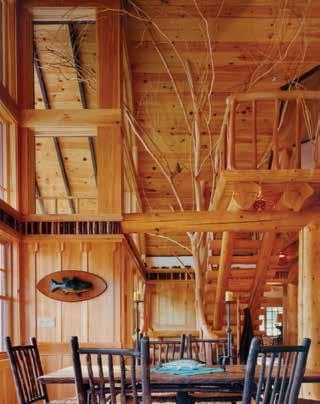
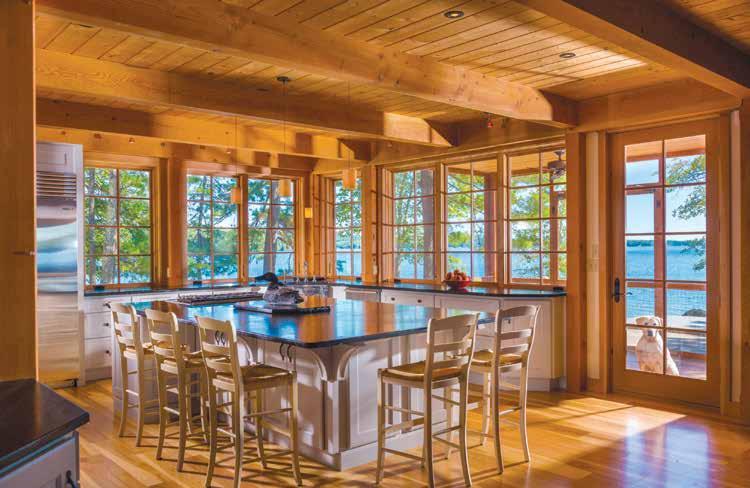
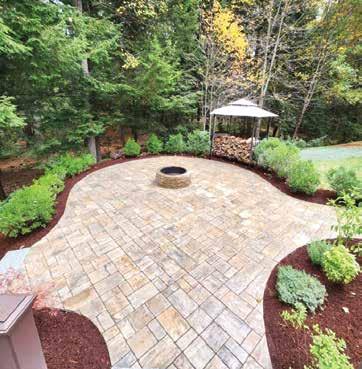
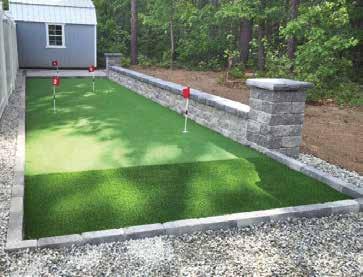
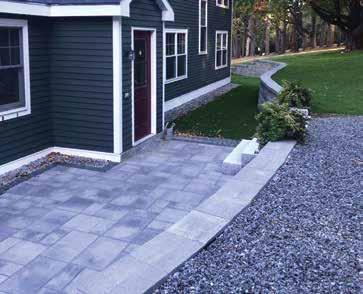

Water quality is not something people think about all that much, especially in developed nations. Though it can be easy to take water quality for granted in countries with ample regulation and sophisticated filtering systems, there are times when anyone, regardless of where they live, should take stock of the water in their homes.
Frequency of testing: One of the variables for individuals to consider is how long it’s been since they last tested the water quality in their homes. For those who have never done so, those who have done it but can’t recall precisely when, or those who know it’s been more than a year since the last test, then it’s a good time to test the water. In fact, the U.S. Environmental Protection Agency recommends annual testing for coliform bacteria, nitrates, total dissolved solids, and pH levels. The EPA notes this testing is especially important for anyone who is using a new well or has replaced or repaired pipes, pumps, or the well casing.
What about public water supply systems? Testing may not be necessary for individuals who get their water from public water supplies. The EPA notes that anyone who pays a water bill gets their water from a public supply system, which is responsible for monitoring and testing water and reporting the results of those tests to the appropriate agencies, as well as the individuals who use the water. Homeowners and tenants who pay a water bill should receive an annual water quality report from their water supply utility, while renters can request a copy of that report from their landlords if they do not pay the bill themselves.
What about private water supply systems? Individuals who receive their water from a private system, such as a household well, are responsible for conducting their own water supply testing. These tests should be conducted annually and in the aftermath of a spill or other incident that could taint the water supply.
Are there any special circumstances to test the water? The EPA notes that certain situations may call for testing the water supply, even if it’s provided by a public supply system. For example, the EPA recommends that expecting parents test their water supply for nitrates in the early months of a pregnancy. Testing should then be conducted again before bringing an infant home and once more during the first six months of the baby’s life. The EPA notes nitrate tests are best conducted in spring or summer after periods of rain.
An eye, taste, and/or smell test can also indicate if the water supply should be tested. Water that stains, has an unusual taste, and/or a conspicuous odor should be tested. In these instances, test for sulfate, chloride, iron, manganese, hardness, and corrosion.
A local chemical or fuel spill also should trigger a test of the water supply. The EPA notes that these tests can be expensive and recommends that individuals contact a local expert to determine which contaminants to test for.
Water quality is easily taken for granted. However, various scenarios may necessitate testing the water supply. A local health department office can be a useful resource for individuals who want to confirm that their water supply is safe. ~Metro
Spring and summer are typically welcomed with open arms. Warm weather, blooming flowers, and trees full of leaves are a welcome sight for many, but seasonal allergy sufferers may find the transition from winter to spring a little more challenging.
The Center for Health Statistics found that just under 26 percent of adults and roughly 19 percent of children have a seasonal allergy. Treatments for seasonal allergies can be effective, and many people find over-the-counter medications are enough to alleviate their symptoms. But even people who take OTC medications daily may have days when seasonal allergies cause considerable discomfort. In such situations, allergy sufferers can consider these strategies.
• Identify your triggers. The American College of Allergy, Asthma, & Immunology notes that pollen is the most common outside allergy trigger. Trees and grasses typically pollinate in spring and summer, which is why these seasons can be especially challenging for people with seasonal allergies. Dust mites and pets might trigger allergies indoors, but these can appear throughout the year. A visit to an allergist can determine what exactly triggers seasonal allergies. For example, certain types of grasses and trees might be triggers for some but not others. Identifying triggers is an effective first step because it can compel people to avoid the things that cause allergic reactions.
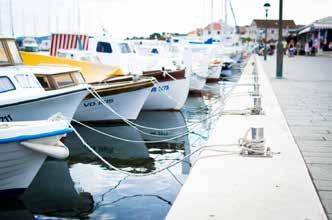
• Stay indoors on dry, windy days. The Mayo Clinic advises
seasonal allergy sufferers to stay indoors on dry, windy days, when pollen can be nearly impossible to avoid.
• Take advantage of a good rain. The Mayo Clinic advises that the best time for seasonal allergy sufferers to be outside is after a good rain. Rain helps to clear pollen from the air, so post-rain conditions can be ideal for people with seasonal allergies.
• Change your clothes and wash up upon coming inside. The ACAAI recommends changing clothes, washing them, and taking a shower upon coming inside during allergy season. Washing clothes and taking a shower reduces the likelihood that you’ll spread pollen around the interior of your home, where it can attach to furniture and trigger allergic reactions.
• Monitor the pollen count. As noted, pollen is a seasonal allergy trigger, so allergy sufferers are urged to monitor the pollen count via a website such as Pollen.com, where visitors can type in their ZIP code and get an up-to-date allergy report. On days when the pollen count is high, stay indoors and keep windows closed so the pollen does not get inside. The Mayo Clinic notes that pollen counts tend to be highest in the morning, so it’s best to avoid being outside during this time of day.
Seasonal allergies can make spring and summer more challenging. A few simple strategies can help people control their seasonal allergies even on days when pollen counts are particularly high. ~Metro


We are on a mission to change the way you feel about insurance.
Buying insurance is one of the most important protections you can offer yourself and your family Chalmers offers easy, knowledgeable advice, all in one call



8 0 0 - 3 6 0 - 3 0 0 0
Our team is ready and waiting!
When you choose Chalmers, you can expect:
A personalized experience every step of the way
A relentless commitment to excellence
A fresh approach to understanding insurance
Access to 100% digital communication and billing
Same-day coverage
By Kathi Caldwell-Hopper
There is nothing quite so special as owning a piece of original artwork or something handmade. You might fall in love with an original pottery bowl, or a print or piece of fine furniture, or even some homemade soap or jelly. When you use handmade items, it brings to mind thoughts of the creative people who make original items.
Luckily for those living in or visiting the Lakes Region, there are plenty of seasonal art fairs and craft markets abounding with everything handmade. From a big craft fair in an outdoor location to special booths at farmers markets nestled between garden sellers, there is something for everyone all over the area.
If you think of craft fairs, the first name that comes to mind is Joyce Endee, the presenter of Joyce’s Craft Shows. She has been coordinating fairs all over New Hampshire for many years. A majority of the fairs Endee presents are in the Lakes Region and north country of the state, and all are extremely popular.
Endee came up with the idea for the fairs that have grown over the years when she was a quilter. She recalls, “My passion has always been creating arts and crafts. I attended a craft fair to sell my quilts and I decided to try to put together a fair myself out of economic necessity and a passion for arts and crafts, and the rest is history.”
She continues, “My artisans (vendors) sell a variety of media including pottery, jewelry, furniture, gourmet foods, acrylic and watercolor artwork, photography, stained glass, metal creations, leather items, quilts, soy candles, soaps and skincare products, fabric art, floral design and much more. I am always looking for

• Custom Brick and Block
• Stonework
• Fireplace Design
• Chimney Lining
• Video Chimney Inspections
• New Chimney Construction
• Chimney Sweeps
• Chimney Repair


new and creative artisans for my shows.
“When I think of customer favorites, some of my exhibiting jewelers come to mind; I have several artisans that do all my fairs,” Endee says.
Upcoming shows will be at Gunstock, 719 Cherry Valley Rd., Rt. 11A in Gilford; On the Green Arts & Crafts Festival on July 11 to 13 and August 8 to 10 at Brewster Academy Drive, Rt. 28 in Wolfeboro. Further shows take place in North Conway and other areas in New Hampshire into the fall.
Admission to the fairs is always free and Endee has created such a welcoming, laid-back environment where attendees can browse for hours, talk to crafters and fine artisans and even get a snack at various booths, that it would be hard to resist attending. To see a list of upcoming arts and crafts fairs, visit www. joycescraftshows.com or call 603-387-1510.
The most respected and beloved artisan fair in New Hampshire is the Annual Craftsmen’s Fair. This is the 92nd year of the fair, which is an event of the League of NH Craftsmen and takes place at Mount Sunapee Resort in Newbury. This year’s fair will be held from August 2 to 10.
Many League-juried members are participants in the fair each year, and this year is no exception. The quality of each item is assured; these are the best and brightest artisans in the state and the range of items is spectacular. Juried members participate as booth holders, demo/sales booth holders, daily demonstrators, and/or exhibitors in art, craft and design or in the Sculpture Garden, or featured artists in The Shop at the Fair.
The Annual Craftsmen’s Fair is the place where many shop-
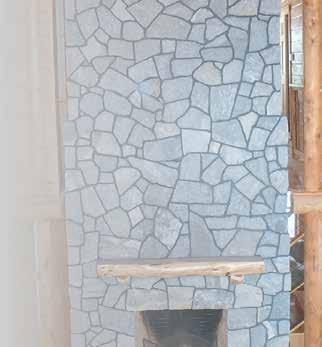

pers fall in love with that special crafted creation they cannot live without. They purchase a piece of pottery or a quilt or fiber art item, to name just few of the creations that once purchased adorn homes for years to come. The added benefit is the chance to talk with many artisans as they tend their booth and to watch a variety of demos, all in a beautiful country environment. Visit www.nhcrafts.org/annual-craftsmens-fair-2025/ for information.
Castleberry Fairs offers many fine arts and crafts for those who love handmade items. Says Ashley Mullen, daughter of Castleberry Fair founder Terry Mullen, “Our family has been organizing artisan fairs since 1989. What started as a single event in Alton Bay has grown into a full calendar of juried arts and craft festivals throughout New England, including several each year in New Hampshire and the Lakes Region.”
Appreciating handcrafted items of all kinds, Mullen explains, “Many of our exhibitors create beautiful outdoor pieces—everything from handcrafted birdhouses and metal garden art to outdoor furniture, wind chimes, and sculptural work designed for patios and yards. We’re lucky to work with a wide range of makers—from those just getting started to those who have been with us for decades.”
With a diverse lineup of artisan vendors, Mullen explains that some consistent favorites are hand-thrown pottery, specialty food items, artisan-made jewelry, and fabric home decor. “Our visitors also love meeting the makers and learning about their crafts—that personal connection really sets our fairs apart.”
Visit www.castleberryfairs.com or call 603-332-2616.
An artisan-focused event presented by Lakes Center for the Arts, the popular Community Arts Festival on June 21 from 10 am to 4 pm, offers items for art lovers at the beautiful Castle








in the Clouds estate in Moultonborough. The festival features dozens of crafters, artists, and community organizations. Art demonstrations, a scavenger hunt, art activities for kids, and more will be happening throughout the day.
The Community Arts Festival is a free event, located on the Castle grounds at 586 Ossipee Park Road, Moultonborough. Contact eoconnor@castleintheclouds.org for more information.
A well-known and beloved event, the Fine Arts and Crafts Festival, brings creative items and fine crafts to downtown Meredith every summer on one special weekend. This year’s event will be August 23 and 24. The fair started long before any other arts and crafts fair was happening in the Lakes Region, and has always been an anticipated event.
The fair is hosted by the Meredith Area Chamber of Commerce, and arts and crafts booths are spread out over Main Street and Mill Falls Marketplace. High-quality artists and craftsmen sell their creations at the fair, with area musicians performing as well.
Visit www.meredithareachamber.com for information.
Farmers markets are always a Lakes Region favorite, and this year, three fairs bring fresh vegetables and other foods to the area. BAMM! (Belknap Area Market Management) offers farmers markets in Meredith, Tilton, and Weirs Beach during the summer season, and into the fall.
With an emphasis on farm crafts as well as more typical crafters, handmade products include jewelry boxes and trays, decorations, and jewelry, to name but a few of the creations.
Says Paul Gareau, founder of BAMM!, “Vendors with a focus on craft products include Briar Bush Farm, Tansey Farm, Twisted Hollow Homestead, Wag and Meow, Walking Softly





















For information, visit www.bamm-nh.org or call 603-4092871.
In Lakes Region towns around the area, summer fairs offer handmade items of all sorts, along with white elephant, baked goods, books and other items.
A famed and long-running Hebron Church Fair is held on July 26 from 9 am to 3 pm at the north end of Newfound Lake at 16 Church Lane in the village of Hebron. The fair is well known for its arts and crafts, with artisans offering handmade pottery, fabric items, woodcraft pieces, and much more. Call 603-481-0601 or visit sites.google.com/view/hebronchurchfair/hebron-fair.
Canterbury Shaker Village has many programs, and for those who love fine arts and crafts, the Artisan Market on Saturday, Sept. 27, is just the thing. The market takes place from 10 am to 4 pm and features many unique artisans and crafters offering their beautiful products. From braided rugs to quilts, wood items, pottery, and more, it is a chance to get an early start on holiday shopping as autumn is just around the corner from the September fair. Admission to the fair is free and is located on the grounds of Canterbury Shaker Village, at 288 Shaker Road; call 603-783-9511 or visit www.shakers.org.



Homeownership is often characterized as a fulfillment of a dream. Indeed, many homeowners feel their ability to buy a home is a reflection of their discipline and commitment to saving money. That discipline and dedication can set homeowners up for long-term financial health, providing a unique sense of security along the way. First-time home buyers may not know what to expect upon buying a home, and since each home is unique, it’s impossible for even long-time homeowners to say with certainty exactly how things will unfold once those new to home ownership get the keys to their first house. Various expenses might be the only common variable when it comes to homeownership, and some of those expenses may surprise firsttime buyers. With that in mind, the following are some expenses first-time buyers can expect once their offers are accepted.
• Down payment: Conventional wisdom long suggested home buyers should submit a down payment of at least 20 percent of the overall purchase price upon buying a home. Buyers who want to follow that advice would need a down payment of $80,000 when buying a $400,000 home. But many home buyers now submit down payments considerably less than 20 percent, particularly in the modern real estate market, which is characterized by high prices and low inventory. The lower the down payment, the higher your monthly mortgage payment will be, so it’s best to save as much as possible toward a down payment.
• Primary mortgage insurance (PMI): Buyers who cannot come up with a down payment of 20 percent or more will have to pay for primary mortgage insurance, which is typically a set
fee that is incorporated into the mortgage payment each month. PMI fees are typically waived once the balance on the mortgage reaches 79 percent or less of the purchase price, though some lenders may waive PMI prior to that if the value of the home increases considerably before the loan balance reaches the predetermined marker.
• Closing costs: The amount of closing costs varies widely depending on a host of variables, but Bankrate.com notes it’s not uncommon for these costs to come in at somewhere between 2 and 5 percent of the loan principal. Closing costs must be paid no later than when the sale becomes official and buyers sign on the (many) dotted lines. Application and credit fees, title fees, underwriting fees, appraisal fees, and transfer tax are among the various fees that fall under the umbrella of closing costs.
• Moving: It’s also important that first-time home buyers budget for moving costs. Moving costs vary and may depend on how much buyers already own and how far they’re moving. The home renovation experts at Angi estimate that local moves typically cost somewhere between $883 and $2,568, while long-distance moves may run buyers anywhere from $2,700 to $10,000 or more.
These costs are some of the upfront fees aspiring homeowners can expect when buying a home. Long-term costs, including homeowners’ insurance (which is separate from PMI), property taxes, homeowners’ association fees, and maintenance, are some additional expenses buyers can plan for as they try to determine their home-buying budgets. ~Metro

www.kitchensofwolfeboronh.com




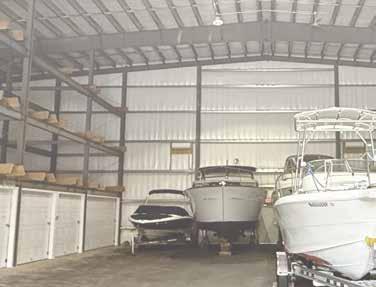
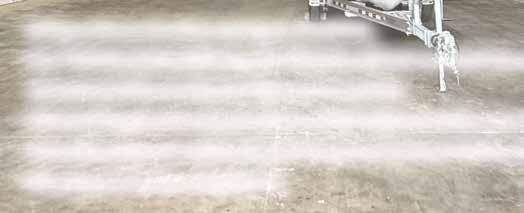







Summer is a season of relaxation. Warm air, longer hours of daylight, and vacations from school and work make summer a laid-back time of year.
Many people enjoy the warmer air of summer, but it’s important to have a cool place to retreat once temperatures become particularly warm. That means a well-cooled home with an air conditioning system operating at peak capacity. A new HVAC system can last between 15 and 25 years. Homeowners whose systems are at least a decade and a half old can keep an eye out for the following signs that an HVAC may need to be replaced.
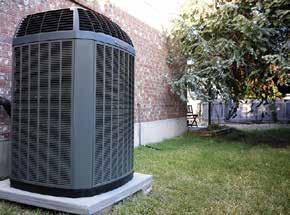
• Higher energy bills: Energy costs can vary widely by location, but homeowners know that their energy bills have been on the rise for years. FirstEnergy estimated that energy costs for New Jersey residents in 2025 could increase by more than 19 percent by the middle of the year, a point in time when many Garden State residents begin using their air conditioning units every day. That can make it hard to gauge if higher energy bills are a reflection of market price increases or a unit that needs replacement. But higher energy bills could indicate a unit is not working efficiently, which is a telltale sign of an HVAC that may need to be replaced. Compare energy bills from a year ago to current bills, and then factor in the price increase. If energy consumption is on the rise compared to a year ago, that could indicate an HVAC unit is working less efficiently.
• A humid home: Humidity is a part of summer, but it’s typical-









ly felt outdoors, not inside. A home with a humid interior while the AC is running could indicate a problem with the HVAC unit. According to HVAC.com, a functioning HVAC unit utilizes an evaporator coil to pull excess water vapor from the air in a home and drain it away from the home. If the air inside a home is humid, the unit might have a mechanical issue that’s preventing this important task from being performed.
• Frequent repairs: A telltale sign a unit needs to be replaced is the need for frequent repairs. Homeowners who are now on a first-name basis with their HVAC contractor may want to ask that professional if it’s time to replace the unit. Money being spent on frequent repairs may be better repurposed toward financing the purchase of a new unit that could last as long as a quarter century.
• Poor air flow: An HVAC unit operating at peak capacity will produce a steady flow of cool air through the vents throughout a home. Poor air flow through those vents means it will take longer than normal to cool a home, and homeowners can put their hands near the vents to see how well or how poorly air is flowing through them. If air is flowing poorly, the unit will have to work harder to cool the home, which will contribute to higher energy bills.
A fully functional air conditioning system is vital in summer. Some telltale signs any homeowner can spot may indicate that an existing HVAC unit needs to be replaced. ~Metro






Homeowners know that the work of maintaining a home is never done. Cleaning is a daily task associated with homeownership, and such sessions can reveal more than dust buildup or dirty walls and surfaces.
When cleaning a home, homeowners can pull double duty and look for potentially hazardous situations. For example, vacuuming and dusting sessions can present a great opportunity to spot electrical hazards that might otherwise go unseen. With that in mind, homeowners can keep an eye out for these four signs of potential electrical hazards when working around the house.

1. Tingling when touching an electrical appliance: The National Fire Protection Association (NFPA) advises homeowners to call a qualified electrician immediately if they experience a tingling feeling when touching an electrical appliance. The Electrical Safety Office notes that experiencing a tingle or the feeling of being shocked is not normal. Homeowners who experience such a feeling should avoid the location and warn others in the home to do the same.
2. Wall outlets that look or feel unusual: Wall outlets do not garner much attention, as many are low enough to be out of sight or even behind furniture. A cleaning session might be the only time homeowners will notice issues with wall outlets. The NFPA notes that discolored outlets or outlets that feel warm to the touch are a sign of an electrical problem. Various issues can cause outlets to look or feel unusual. An outlet could be short-circuiting, or wires could be damaged, and each issue merits the attention of a qualified electrician.
3. Foul odors: An odor that calls to mind burning rubber is another indicator of an electrical problem. Various electrical experts indicate that such odors can be indicative of damaged wiring, an overloaded circuit, or loose connections, each of which poses a significant safety hazard. The NFPA urges homeowners to contact a qualified electrician immediately if they sense a smell of burning rubber in their homes.
4. Flickering lights: Homeowners won’t need to wait until cleaning sessions to notice flickering lights. Such flickering is hard to miss, regardless of what residents are doing inside a home. Sometimes lights flicker because of a loose bulb, so homeowners who notice flickering should first turn off the light, let the bulb cool down if needed, and then check to make sure it isn’t loose. If the bulb isn’t loose, then the lights could be flickering for a multitude of reasons. A loose connection can cause flickering, as can an overloaded circuit. Homeowners also may not realize that not all bulbs and dimmer switches are designed to work together. For example, modern LED light bulbs often require the installation of specific dimmer switches, or the lights won’t operate properly. Flickering can result if these products are not compatible. If a home is old, then flickering lights could be due to old wiring that needs to be replaced.
Daily and weekly cleaning sessions can be a good time for homeowners to perform a quick audit of electrical outlets and lights to ensure everything is safe and working properly. ~Metro








Lakeport Landing Marina has enjoyed over 47 years of business in the Lakes Region. Our facility represents the finest example in Marine Sales and Service. Not only can Lakeport Landing Marina make the dream of owning a boat possible, but we will help you completely maintain and pamper your boat for as long as you own it.



